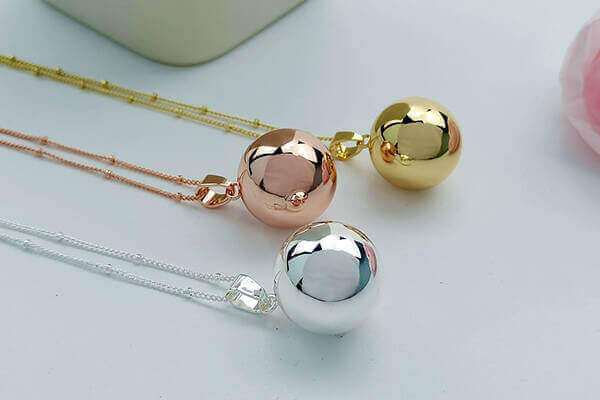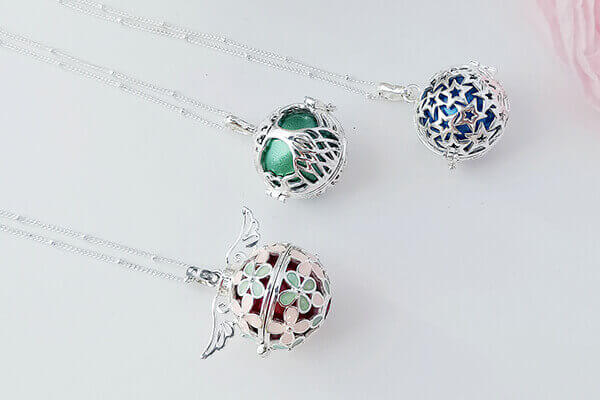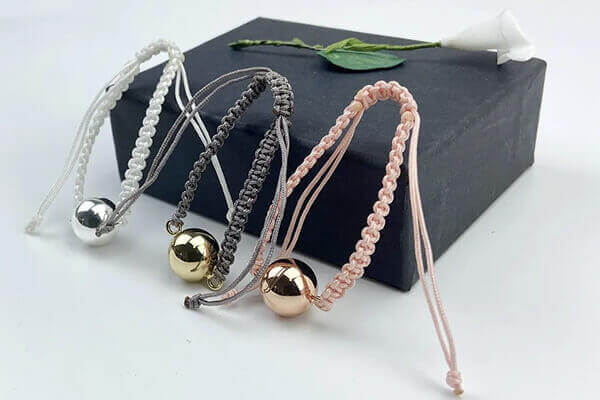One-stop shopping
Wholesale Pregnancy Bola Jewelry Just in One Place – The Ultimate Solutions
Are You Looking for Wholesale Pregnancy Bola Jewelry?
We are a leading B2B manufacturer of high-quality pregnancy bola jewelry, specializing in customizable designs, OEM/ODM services, and certified safe materials. With quick lead times and global shipping, we help wholesalers, distributors, and brands expand their maternity jewelry collections with unique, emotional, and stylish products.
REQUEST A QUOTE FOR MORE DETAILS
The Ultimate Guide of Pregnancy Bola Jewelry
To store owners, distributors, wholesalers, traders, and brand owners purchasing pregnancy bola Jewelry from China.
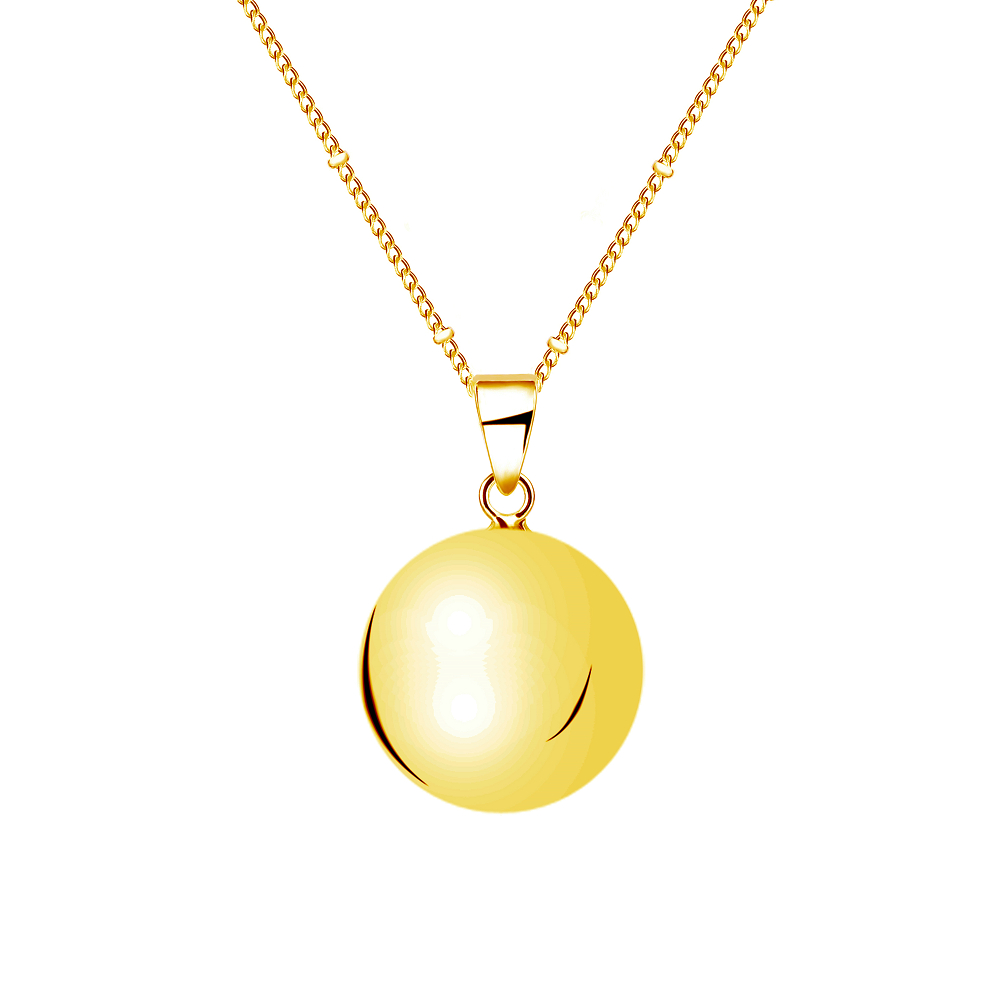
Chapter 1
Introduction to Pregnancy Bola Jewelry
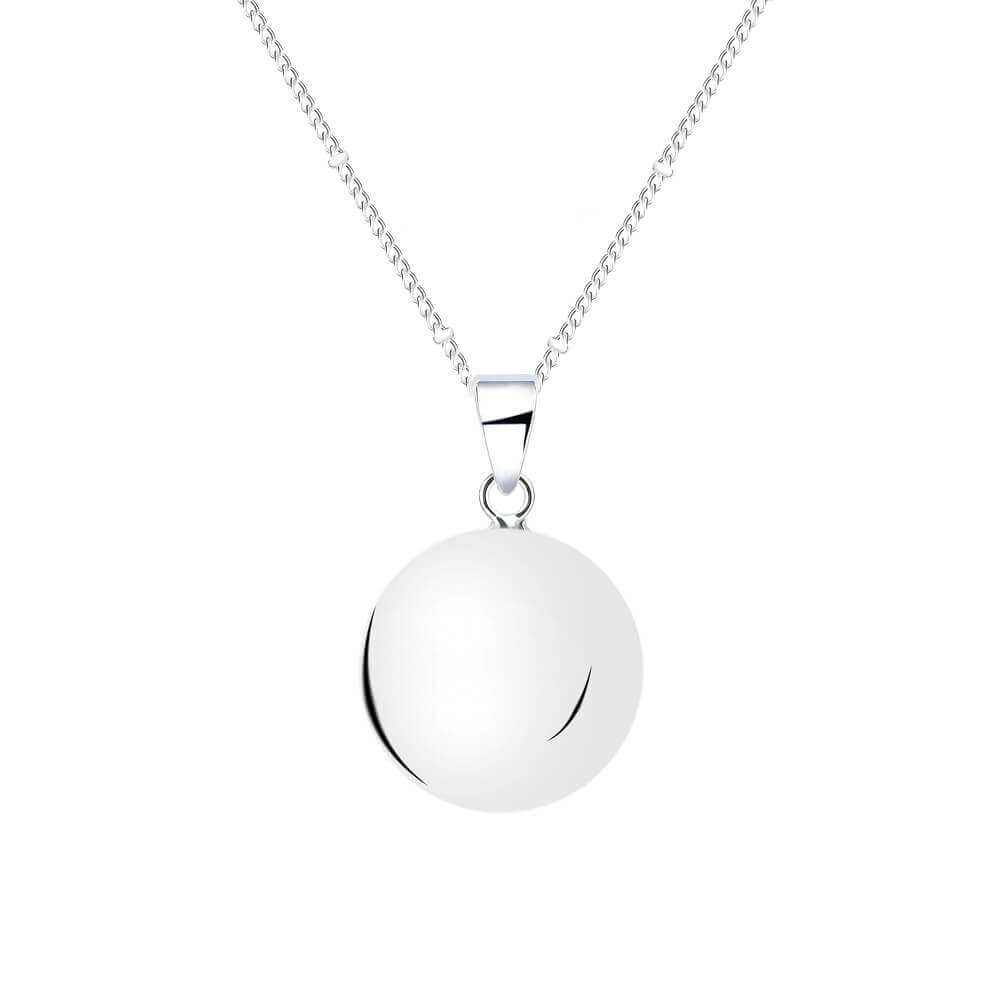
Chapter 2
Key Benefits of Pregnancy Bola Jewelry
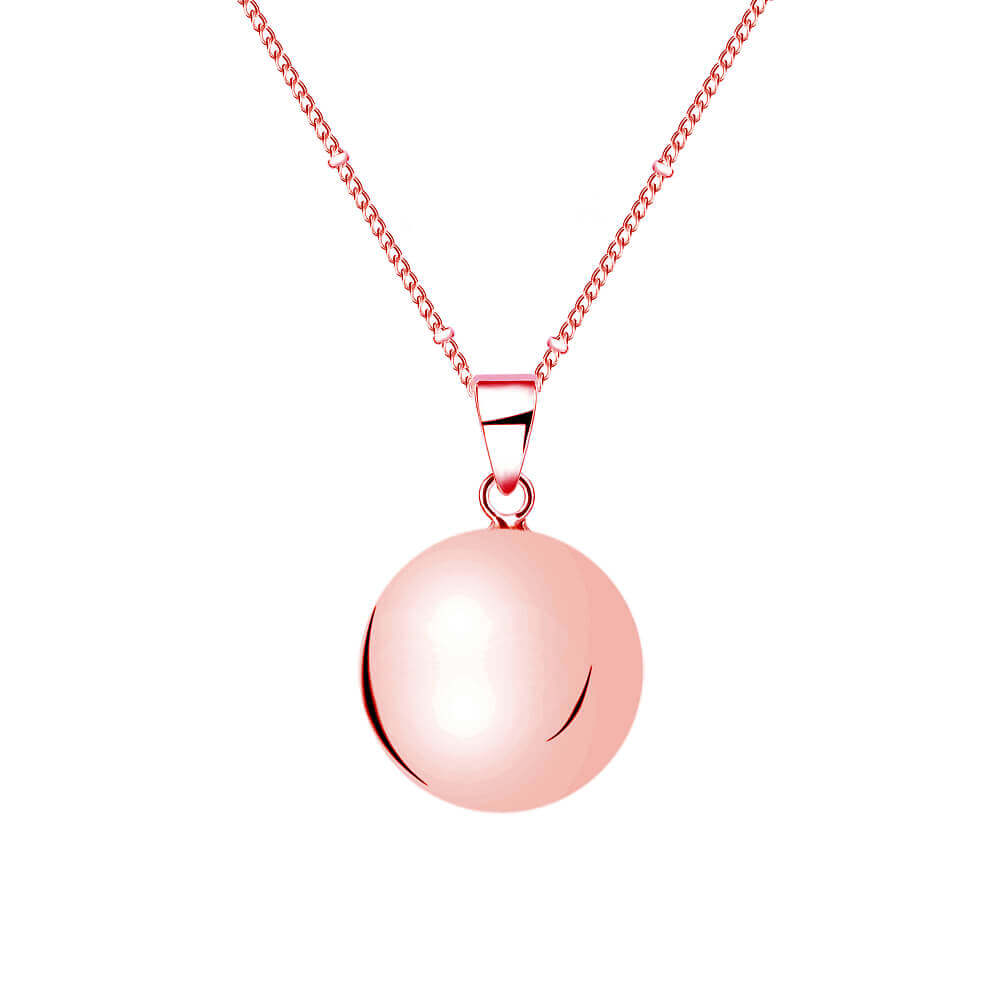
Chapter 3
Types of Pregnancy Bola Jewelry

Chapter 4
Product Safety and Certifications

Chapter 5
Market Potential and Target Audience

Chapter 6
Pricing and Profitability
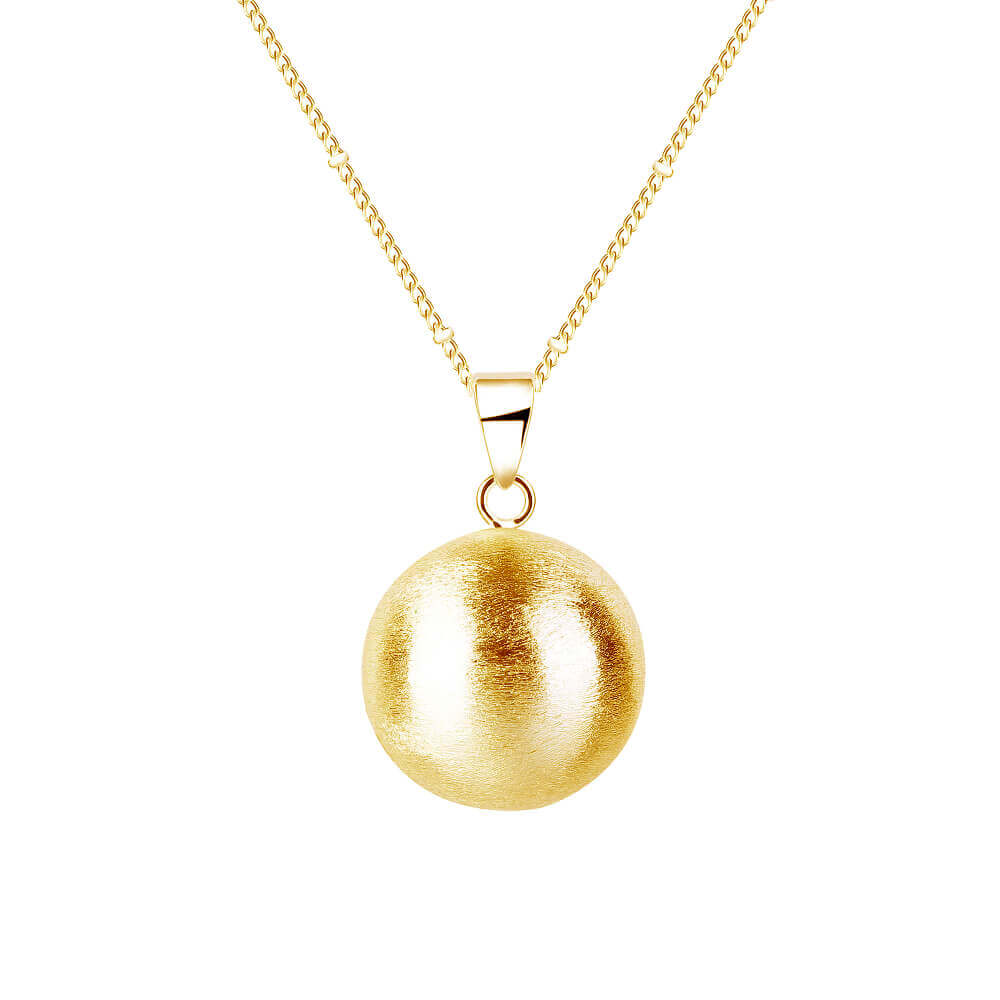
Chapter 7
Packaging and Branding Options
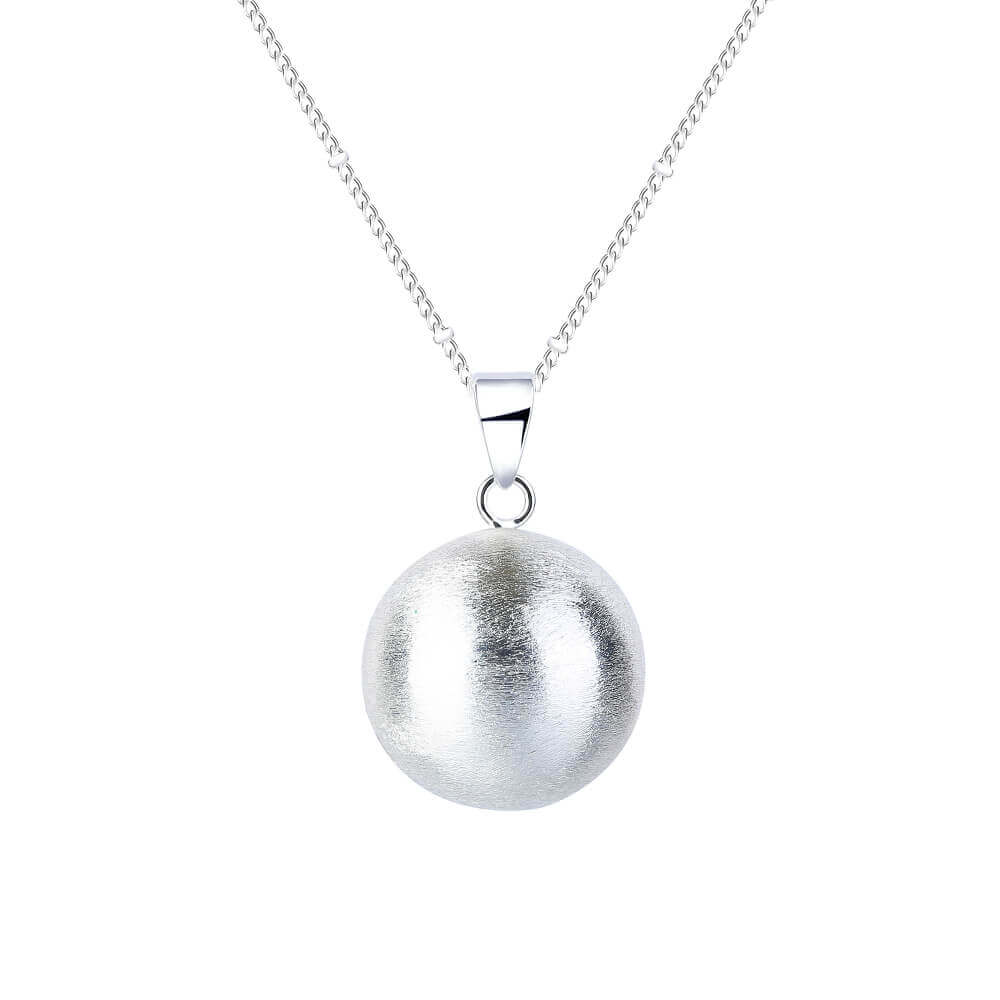
Chapter 8
Shipping and Logistics
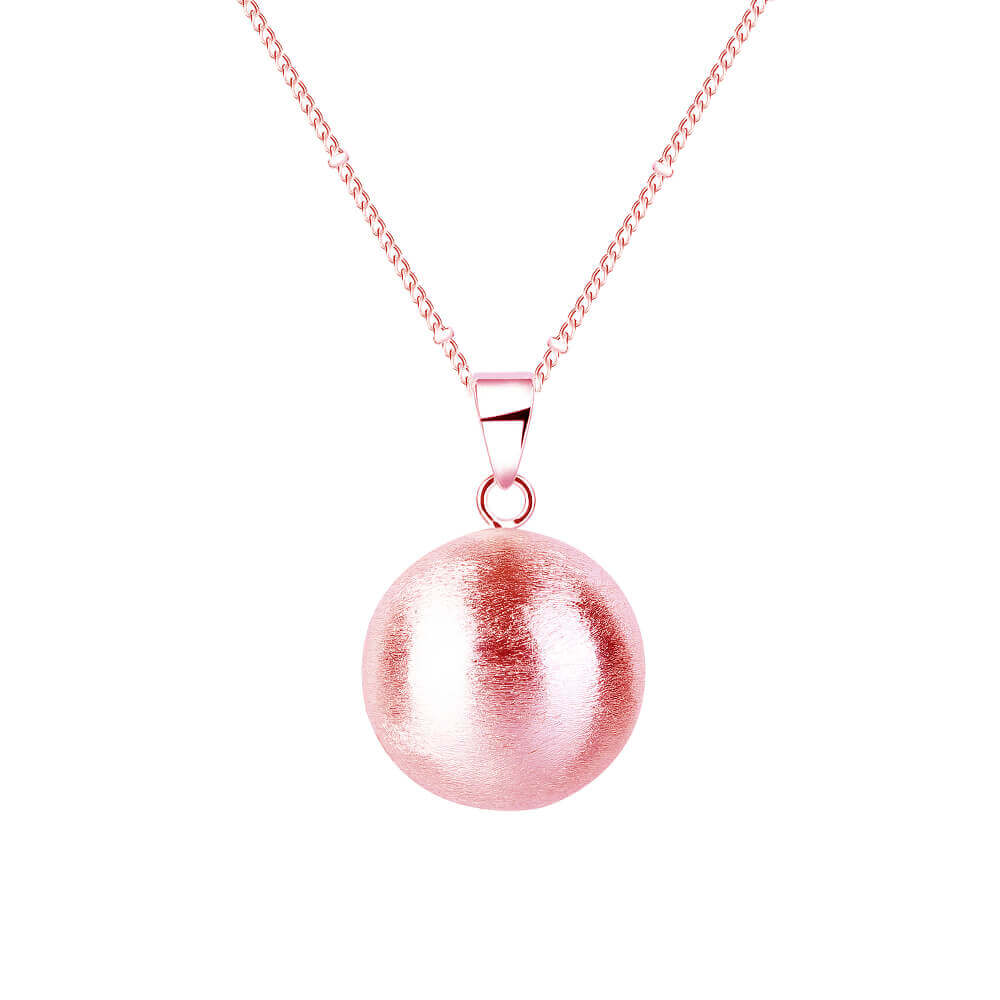
Chapter 9
Quality Control and Inspection
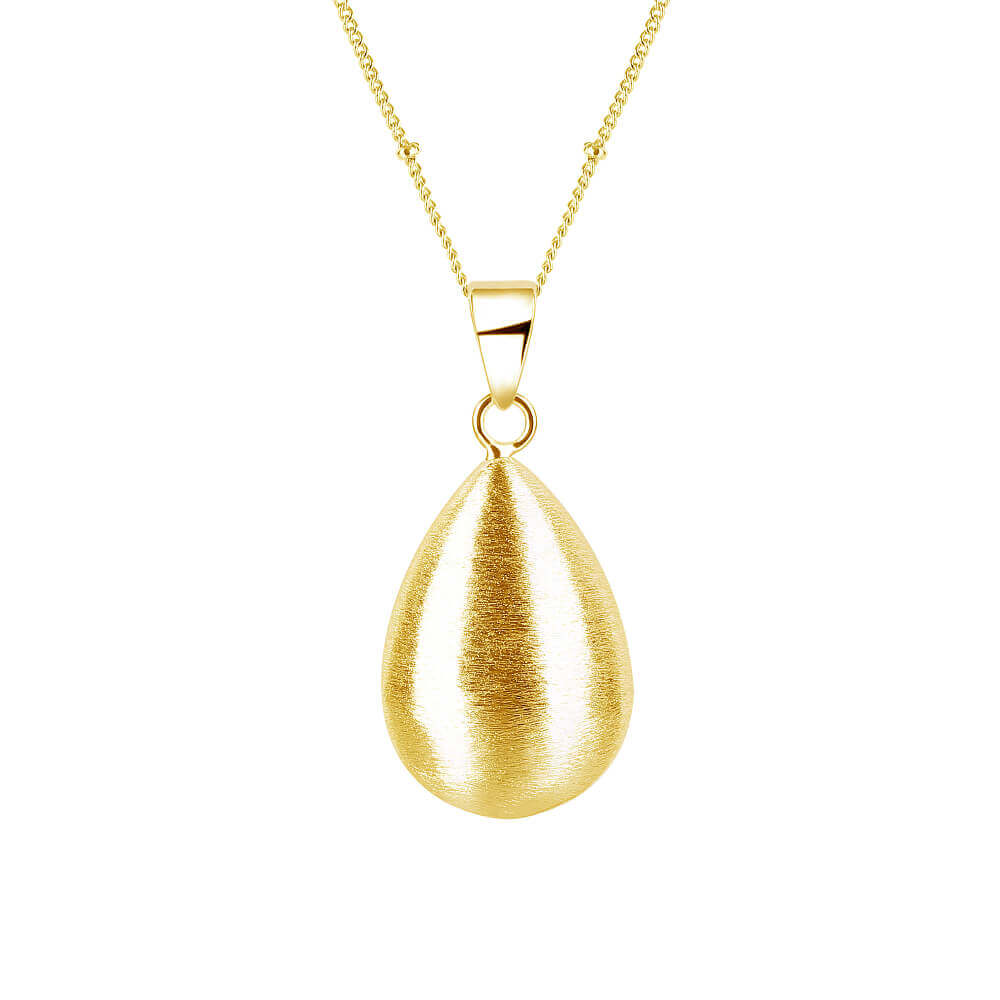
Chapter 10
After-Sales Support and Warranty
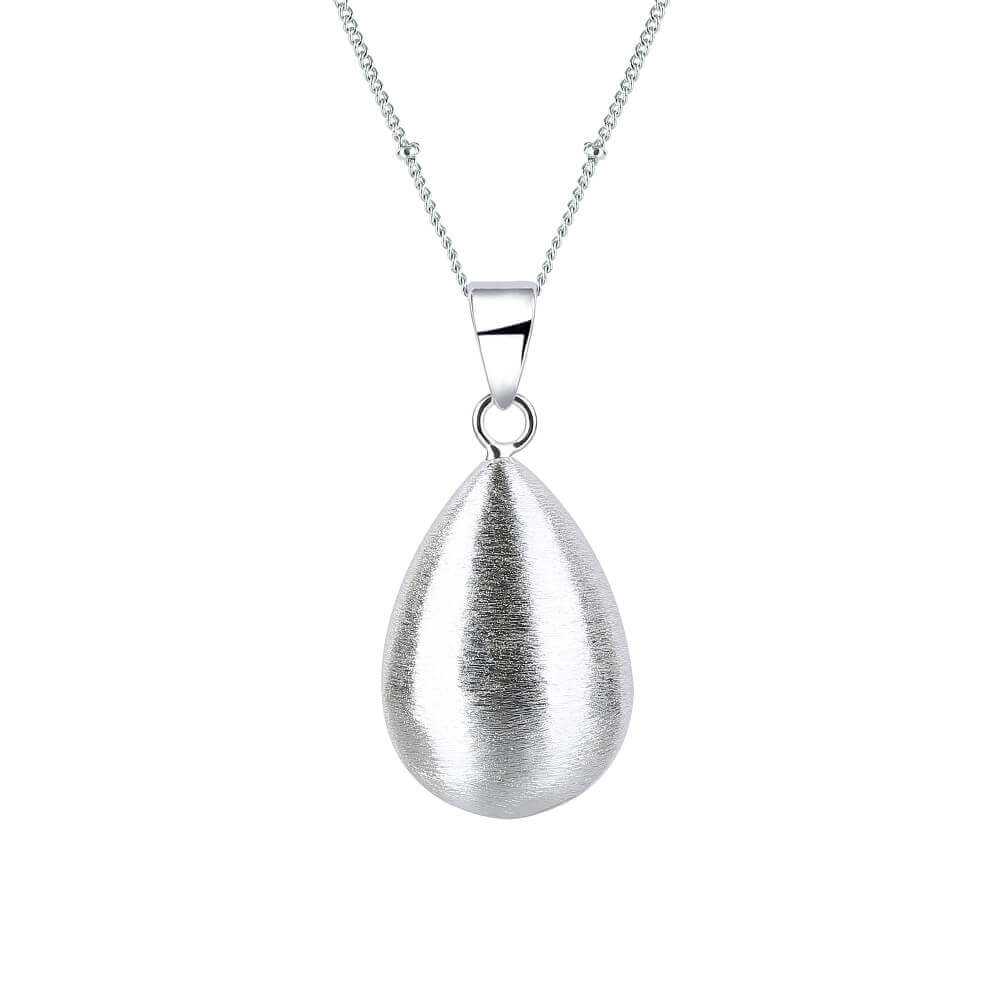
Chapter 11
Trends and Future Opportunities
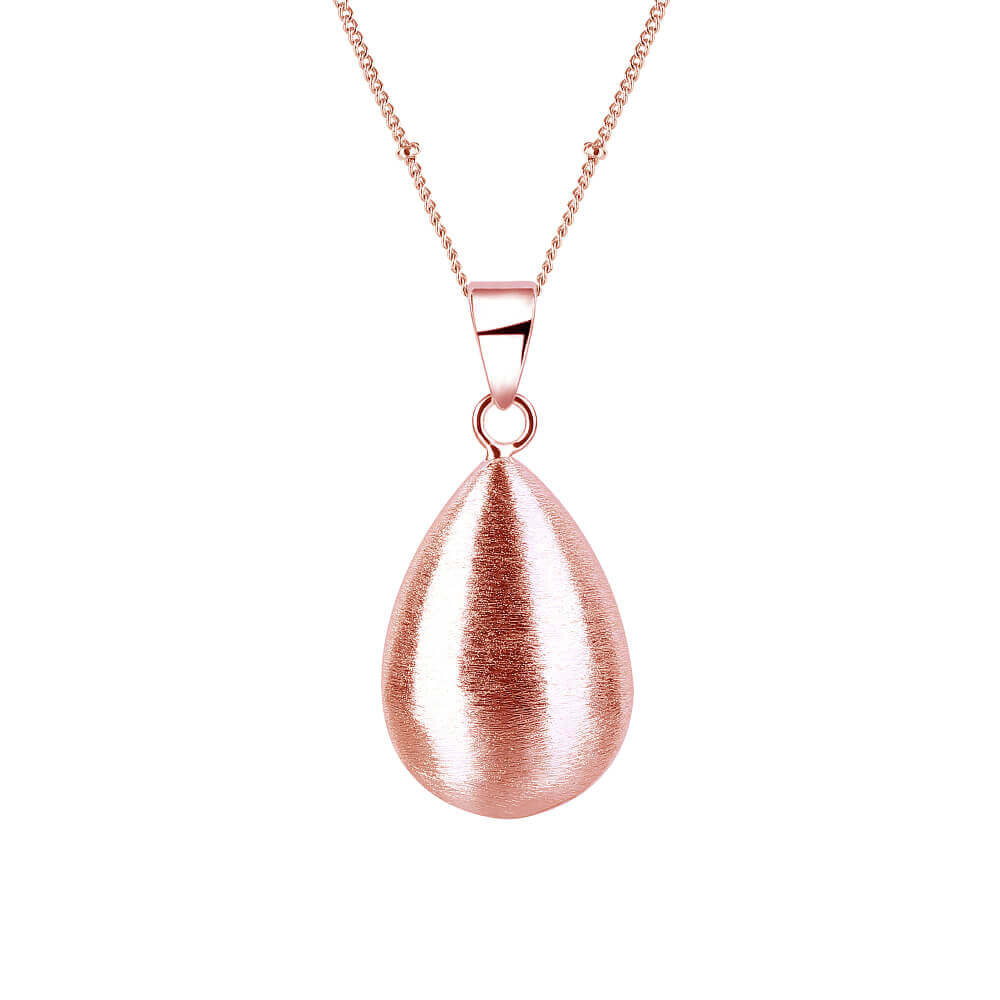
Chapter 12
How to Place Orders and Work with Suppliers
Charpter 1
Request A free quote
Need help finding information, we would love to hear from you
Please complete the form and we’ll get back to you within 1-2 business days. We look forward to working with you.

Room 901, Mingfeng Building, No.2 Road ZhenMing Guangming Shenzhen China

+86 13682555219

www.aisnibola.com
Introduction to Pregnancy Bola Jewelry

A pregnancy bola, also known as a harmony ball, is a piece of jewelry traditionally worn by expectant mothers. It originates from ancient cultures, particularly in Mexico, where it is referred to as a “bola” or “llamador de ángeles” (angel caller), and Indonesia, where it’s called a “bulan bola.” These cultures believed that the soft, melodic sound emitted by the bola’s internal chime had a protective and calming effect on both the mother and the baby.
The pregnancy bola is typically a pendant that hangs on a long chain, resting close to the belly of the pregnant mother. Inside the pendant is a small ball or chime that produces a gentle, soothing sound as it moves with the mother’s daily activities. This sound is believed to be heard by the baby from around 20 weeks of pregnancy, promoting a sense of calm and familiarity.
Traditionally, the pregnancy bola was worn not only as a protective charm for the baby but also as a piece of jewelry passed down through generations, signifying maternal care and love. Today, it continues to hold deep emotional and cultural significance for expectant mothers worldwide, often becoming a cherished keepsake or even being passed down to future generations.
In modern times, the pregnancy bola has grown in popularity due to its unique combination of maternity fashion and emotional significance. There are several reasons for its resurgence:
- Prenatal Bonding: As the mother wears the bola, the gentle chime becomes familiar to the baby in the womb. After birth, the baby often finds comfort in hearing the same soft sound, fostering a continued sense of security. This emotional connection makes the pregnancy bola a thoughtful gift and a meaningful addition to any maternity collection.
Maternity Fashion Trend: The pregnancy bola has evolved into a stylish accessory that appeals to fashion-conscious mothers-to-be. Designers offer various styles, including minimalist, classic, and ornate designs, made from materials such as sterling silver, gold plating, and even precious stones. This versatility allows women to express their personal style during pregnancy while still embracing the tradition.
Emotional and Spiritual Appeal: Beyond fashion, the pregnancy bola taps into a deeper emotional and spiritual connection. Many believe that the harmonious sound promotes peace, mindfulness, and relaxation for both mother and child, aligning with modern wellness trends that emphasize mindfulness, mental health, and emotional well-being.
Gift Market: As baby showers and gender reveal parties become more popular, the pregnancy bola has become a highly sought-after gift item. It’s seen as a unique and thoughtful gift for mothers-to-be, adding sentimental value that goes beyond typical baby products.
Celebrity Endorsement: With the rise of social media and influencers, pregnancy bolas have gained exposure among celebrities and fashion icons who have been seen wearing these pieces during their pregnancies. This has contributed to their growing popularity and increased consumer demand.
Global Awareness: As maternity products expand globally, more people are becoming aware of the pregnancy bola’s heritage and its significance. Its cross-cultural appeal has made it a popular choice for expectant mothers in various regions, from Europe to the United States, and beyond.
By combining meaningful tradition, practical function, and contemporary style, pregnancy bolas have become a must-have item in maternity fashion, appealing to a growing market of boutique owners, wholesalers, distributors, and brand owners looking to capitalize on this trend.
Charpter 2
Key Benefits of Pregnancy Bola Jewelry

Prenatal Bonding: The soft, melodic chime of the pregnancy bola helps establish an early bond between the mother and baby, as the soothing sound becomes familiar to the baby while in the womb. This bonding continues after birth, offering comfort and calming effects to the newborn.
Soothing and Calming: The gentle sound produced by the bola promotes relaxation and emotional well-being for the mother. Many believe the chime helps reduce anxiety and stress during pregnancy, contributing to a peaceful environment for both mother and baby.
Sentimental Keepsake: The pregnancy bola often becomes a cherished memento that mothers can keep or pass down to future generations, symbolizing the special journey of motherhood.
Stylish Accessory: In addition to its emotional benefits, the pregnancy bola is a fashionable piece of jewelry that complements maternity wear. With various designs and materials available, mothers can express their style while embracing the emotional significance of the piece.
Growing Maternity Trend: The pregnancy bola is increasingly popular in maternity fashion, making it a high-demand product. Its unique combination of style, tradition, and emotional connection appeals to modern, trend-conscious consumers.
Emotional Appeal: The product tells a story, making it an ideal item for retailers to market with emotional storytelling. This emotional value increases consumer interest, especially among gift buyers and expectant mothers looking for meaningful products.
Customizable and Versatile: Retailers can offer a range of designs, materials, and customization options, including personalized packaging or engravings. This flexibility appeals to a broader customer base, including boutiques and brand-conscious consumers.
High-Profit Potential: With a relatively low cost of production and high emotional value, pregnancy bolas offer attractive profit margins for retailers. The product’s sentimental value justifies premium pricing, especially for unique designs or custom pieces.
Easy to Promote: Pregnancy bolas naturally lend themselves to digital marketing through social media, influencer endorsements, and visual storytelling. The emotional narrative around bonding, tradition, and style makes it a compelling product to advertise online and in-store.
By highlighting both the emotional connection for mothers and the commercial benefits for retailers, pregnancy bola jewelry offers a win-win for all parties.
Charpter 3
Types of Pregnancy Bola Jewelry
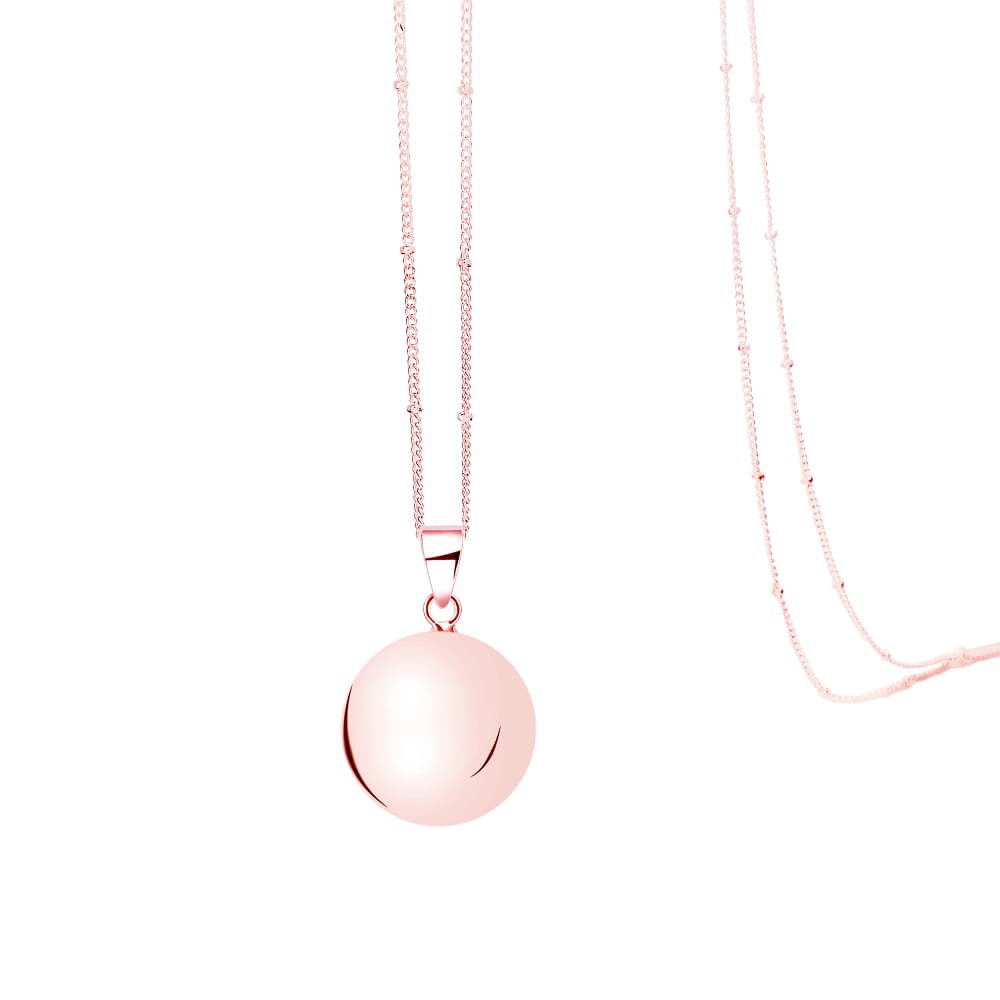
Brass: Brass pregnancy bolas provide a warm, rustic look and are often chosen for their natural properties. Some customers believe brass has health benefits, such as promoting energy and circulation, which may appeal to mothers looking for alternative wellness options. However, brass can tarnish over time, so it often requires additional care.
Gold-Plated or Rose Gold-Plated: For customers seeking a more luxurious appearance at a lower cost than solid gold, gold-plated or rose gold-plated pregnancy bolas are popular. They combine the elegance of gold with the affordability of base metals, making them an attractive middle-ground option.
Hypoallergenic Options: For mothers with skin sensitivities, hypoallergenic materials such as nickel-free brass, or stainless steel(for matching chains) are essential. These materials are crafted to reduce irritation and are a key selling point for consumers who prioritize safety and comfort during pregnancy.
Shapes: Pregnancy bolas come in a variety of shapes, from the classic round ball to more unique options like hearts, teardrops, or crescent moons. Each shape offers a different aesthetic appeal, catering to both traditional and modern tastes.
Sizes: The size of the pregnancy bola can vary from small, discreet pendants to larger, more eye-catching pieces. Smaller sizes are more subtle, while larger bolas tend to produce a louder chime, making them more noticeable as both a fashion statement and a functional piece.
Colors: Beyond the traditional silver, gold, and rose gold finishes, pregnancy bolas are available in various colors, including enamel-coated designs, blackened silver, and vibrant shades that can be matched with personal style or outfit preferences. Multi-color options also allow for playful, contemporary looks.
Decorative Options:
- Engraved Designs: Custom engravings, whether of meaningful symbols, names, or messages, add a personalized touch to the bola, making it more than just a piece of jewelry.
- Polished or Matte Finishes: Some pregnancy bolas feature a high-gloss polished finish for a sleek and modern look, while others may have a matte or brushed texture for a more understated, organic feel.
- Gemstone Accents: To elevate the design, pregnancy bolas can include small gemstones or crystals as decorative accents, appealing to customers looking for something more elegant or luxurious. These stones can symbolize birth months or personal beliefs, making the jewelry more meaningful.
OEM (Original Equipment Manufacturer): For businesses looking to create their own unique pregnancy bola designs, OEM services allow them to develop completely custom products. This could include creating original shapes, choosing unique materials, or integrating specific design features that align with their brand identity.
ODM (Original Design Manufacturer): ODM services offer pre-existing designs that can be slightly modified to fit a business’s branding needs. This includes adjustments in color, size, or minor design elements to create a semi-custom product without the need for extensive design work from scratch.
Logo Engraving: Pregnancy bolas can be engraved with a brand’s logo or custom design, adding a level of personalization that makes it unique to the retailer or boutique. This is particularly useful for brands seeking to distinguish themselves in a competitive market.
Custom Packaging: Packaging is an essential aspect of branding, and custom boxes or pouches can be designed to reflect the aesthetic of the retailer or brand. Premium packaging adds value to the product and enhances the unboxing experience for the consumer, making it a perfect gift item.
Personalized Collections: Brands can create entire collections based on a theme, such as “minimalist elegance” or “boho-chic,” with exclusive designs that are tailored to their target audience. Offering exclusive, limited-edition pieces helps to increase demand and create a sense of urgency among consumers.
By offering diverse materials, design variations, and extensive customization options, pregnancy bola jewelry can be tailored to meet the needs of various consumer preferences, making it an appealing product for retailers, wholesalers, and brands looking to differentiate themselves in the maternity market.
Charpter 4
Product Safety and SGS Testing Reports

Lead, Cadmium, and Nickel Release Standards:
Ensuring that pregnancy bola jewelry complies with lead, cadmium, and nickel release standards is crucial for the safety of both mothers and babies. Lead and cadmium are toxic heavy metals that, when present in jewelry, can pose health risks through skin contact, especially during pregnancy when the body is more sensitive. Nickel, commonly found in alloys, is a leading cause of skin allergies and irritations. Ensuring these metals are either absent or within permissible limits ensures that the jewelry is safe for long-term use, particularly for expectant mothers who may have heightened skin sensitivity.Hypoallergenic Materials:
For expectant mothers, skin sensitivities can increase during pregnancy. Using hypoallergenic materials such as sterling silver, stainless steel, and nickel-free brass is essential to prevent allergic reactions. This also increases the appeal of the product to a broader audience, especially those with sensitive skin or specific metal allergies. Offering hypoallergenic options not only meets safety standards but also positions the brand as responsible and considerate of consumer health.
Why SGS Test Reports Matter:
SGS is one of the world’s leading inspection, verification, and certification companies, and their test reports provide a trusted validation of product quality and safety. For pregnancy bola jewelry, having SGS test reports means the products have been independently tested for compliance with international safety standards, including the presence of harmful chemicals like lead, cadmium, and nickel. These reports ensure that the jewelry is safe for global markets, particularly those with strict regulations like the EU and the USA.Ensuring Product Quality for the International Market:
SGS test reports offer confidence to wholesalers, distributors, and retailers that the products meet the safety standards of their respective countries, preventing potential legal or regulatory issues. For instance, Europe enforces REACH regulations that limit the use of harmful substances in consumer products, while the United States regulates heavy metals in children’s products through the CPSIA. SGS certification shows that the pregnancy bola jewelry complies with these regulations, allowing retailers to sell the products with confidence.Building Trust with Customers:
Displaying or providing SGS test reports builds trust with both B2B and B2C customers by showing that safety is a priority. Retailers and brands can use these reports in their marketing efforts to reassure their customers that the products they sell are safe and of high quality, which is particularly important for items intended for expectant mothers. This transparency enhances the brand’s reputation and can be a strong selling point in competitive markets.
In conclusion, ensuring material safety and obtaining SGS test reports are critical for maintaining high product standards, complying with international regulations, and offering peace of mind to both businesses and consumers.
Charpter 5
Market Potential and Target Audience
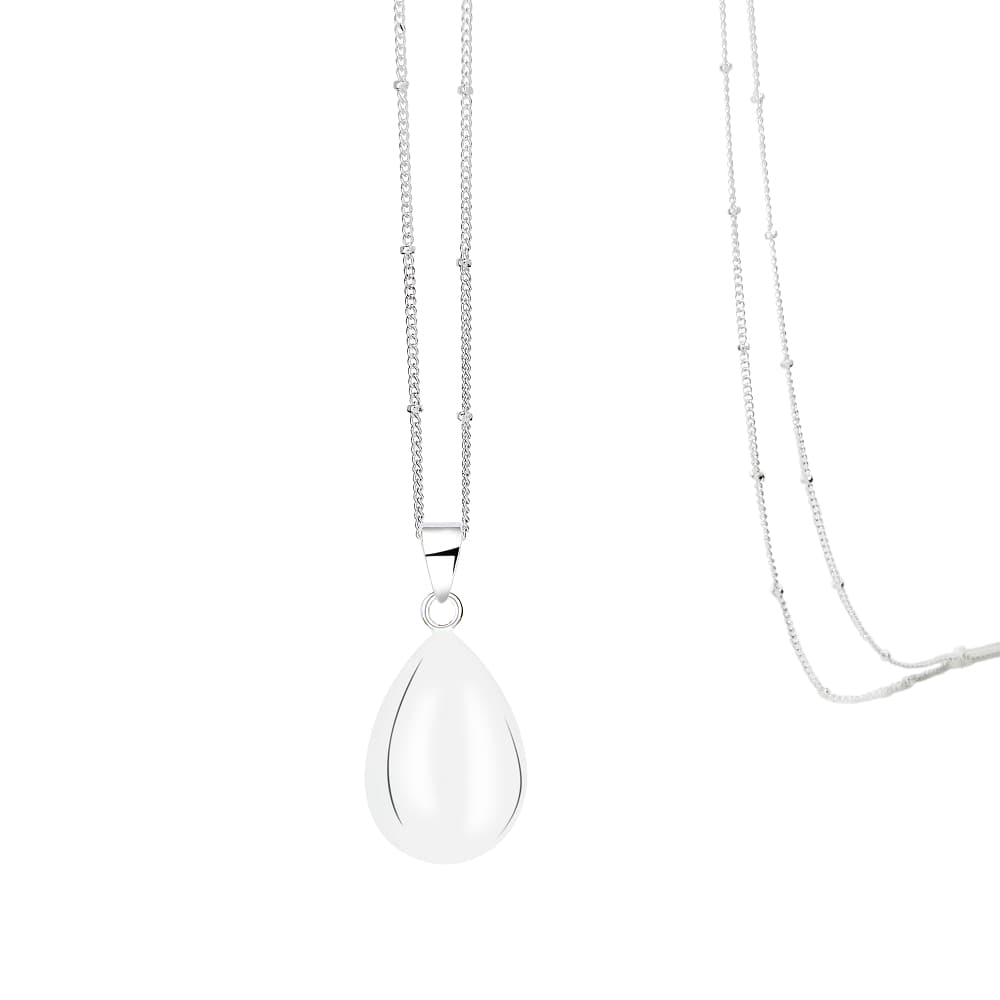
Mothers-to-Be:
The primary audience for pregnancy bola jewelry is expectant mothers. Pregnancy is an emotional and transformative time, and mothers-to-be often seek products that foster a connection with their baby. The pregnancy bola, with its calming chime and deep cultural significance, offers a meaningful accessory that not only enhances their style but also helps create a soothing prenatal bond. Mothers are drawn to the emotional value and the fashion-forward aspect of the jewelry, making it a must-have item for maternity wear.Gift Buyers:
Pregnancy bolas make an ideal gift, especially for baby showers, gender reveal parties, or as a thoughtful present for mothers-to-be. The emotional and symbolic nature of the bola, along with its aesthetic appeal, makes it a unique and cherished gift. Retailers can market pregnancy bolas as special, personalized gifts, appealing to gift buyers who want something more meaningful than traditional baby items.Wellness Enthusiasts:
With the growing interest in wellness and mindfulness products, pregnancy bolas attract consumers looking for items that promote calmness, relaxation, and emotional well-being. The soft chime of the bola is often associated with relaxation techniques, making it appealing to individuals who value holistic health, meditation, or spiritual well-being. This group sees the pregnancy bola not just as jewelry, but as a functional piece contributing to a peaceful pregnancy experience.Fashion-Forward Maternity Market:
The modern maternity market has evolved beyond purely functional items. Today’s mothers-to-be are fashion-conscious and want products that reflect their style during pregnancy. Pregnancy bolas offer a blend of tradition and modern design, making them attractive to women looking to maintain their fashion identity while embracing their pregnancy journey. With a variety of designs, materials, and finishes, pregnancy bolas cater to those who view maternity wear as an extension of their personal style.
Europe:
Europe, particularly countries like France, Italy, and Spain, has a strong tradition of wearing pregnancy bolas (often referred to as bola de grossesse in French culture). This cultural connection drives consistent demand, particularly in countries with a high regard for tradition and fashion. Additionally, European consumers are often conscious of product safety and quality, making certified, hypoallergenic pregnancy bolas especially appealing in this market.North America (USA and Canada):
In North America, there has been a growing trend toward unique, meaningful maternity gifts, driven by consumer interest in baby showers and the culture of gift-giving around pregnancy. The pregnancy bola fits well in this landscape, especially with the rise of influencer marketing and social media, where celebrities and bloggers highlight fashionable maternity products. This region’s focus on safety standards (like CPSIA) makes certified pregnancy bolas a key product for this market.Asia-Pacific (Australia, Japan, China):
The Asia-Pacific region has seen an increasing demand for pregnancy-related products, driven by rising disposable incomes and a growing awareness of international maternity trends. In countries like Australia, pregnancy bolas are becoming a popular item in boutiques and gift shops, particularly among wellness-focused consumers. In markets like Japan and China, where family and tradition are highly valued, pregnancy bolas are gaining traction as unique gifts that honor the journey of motherhood.Latin America:
Pregnancy bolas have strong roots in Mexico, where they originated as “llamadores de ángeles” or “angel callers.” In this region, there is a deep cultural understanding of the product, making it both a traditional and a fashionable accessory for expectant mothers. As the trend spreads throughout Latin America, there is a growing demand for more modern designs and customization options.
Emotional Connection:
The pregnancy bola stands out from other maternity or fashion accessories due to its deep emotional significance. While many maternity products focus solely on functionality, the pregnancy bola combines style with a sentimental value that resonates strongly with mothers-to-be. This emotional appeal creates a powerful bond between the consumer and the product, making it a more meaningful purchase compared to generic maternity items.Prenatal Bonding & Wellness:
Unlike typical jewelry, pregnancy bolas serve a functional purpose by helping to foster prenatal bonding through their soothing chime. This wellness element taps into the growing trend of mindfulness and holistic health, positioning the pregnancy bola as more than just an accessory—it becomes a tool for emotional well-being during pregnancy. This sets it apart from other jewelry pieces that may lack this emotional and functional connection.Customizability and Personalization:
Pregnancy bolas offer extensive customization options, from engraved names to personalized packaging and unique designs. This level of personalization is rare in the maternity market, giving retailers and brands an edge in offering exclusive, branded collections. For wholesalers, the ability to cater to different tastes and preferences through OEM/ODM services enhances the product’s appeal to a wider audience.Cultural Heritage with Modern Design:
Pregnancy bolas carry a rich cultural heritage, making them unique compared to mainstream fashion jewelry. This historical significance adds value to the product, especially when combined with modern designs that appeal to today’s fashion-conscious consumers. By blending tradition with contemporary aesthetics, pregnancy bolas offer something truly unique in the maternity accessory market.Wide Range of Price Points:
Pregnancy bolas are available in a range of materials and designs, allowing them to cater to both high-end and budget-conscious consumers. This flexibility in pricing provides a competitive edge, as brands and retailers can offer a diverse selection that appeals to different segments of the market, from luxury boutiques to affordable gift shops.
By addressing the emotional, cultural, and functional aspects of the pregnancy bola, along with its diverse market potential, this product stands out as a unique and profitable addition to any maternity or fashion-related product line.
Charpter 6
Pricing and Profitability
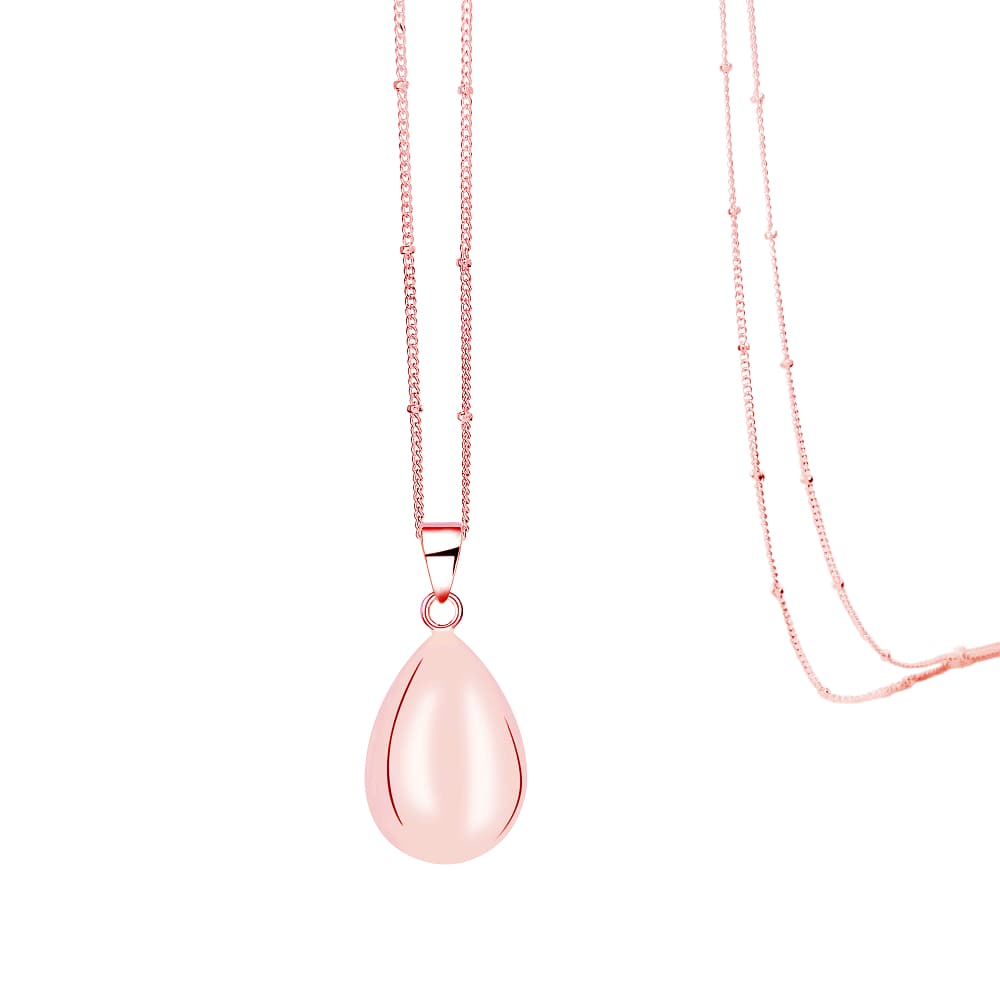
Price Ranges by Material:
The pricing of pregnancy bola jewelry varies significantly based on the materials used. For instance:- Brass: Brass bolas often fall in the middle price range, typically costing between $3 and $5 per piece, depending on the thickness of the material and any additional treatments, such as anti-tarnish coatings.
- Gold-Plated or Rose Gold-Plated: These pieces are often priced based on the thickness of the plating and the base material. Wholesale prices can range from $6 to $15 per piece for gold or rose gold-plated options.
Price Ranges by Design:
The complexity and uniqueness of a pregnancy bola’s design also influence the wholesale price:- Simple Designs: Basic designs without embellishments, engraving, or extra detailing tend to be at the lower end of the pricing scale, typically ranging from $3 to $6 per piece.
- Engraved or Polished Designs: More intricate designs, such as those with custom engravings or polished finishes, generally cost more. Wholesale prices for these can range from $4 to $10 per piece.
- Gemstone Accents or Custom Designs: Bolas featuring gemstone accents, custom colors, or unique artistic designs can fetch higher prices, with wholesale rates ranging from $7to $15per piece, depending on the material and craftsmanship involved.
Why SGS Test Reports Matter:
SGS is one of the world’s leading inspection, verification, and certification companies, and their test reports provide a trusted validation of product quality and safety. For pregnancy bola jewelry, having SGS test reports means the products have been independently tested for compliance with international safety standards, including the presence of harmful chemicals like lead, cadmium, and nickel. These reports ensure that the jewelry is safe for global markets, particularly those with strict regulations like the EU and the USA.Ensuring Product Quality for the International Market:
SGS test reports offer confidence to wholesalers, distributors, and retailers that the products meet the safety standards of their respective countries, preventing potential legal or regulatory issues. For instance, Europe enforces REACH regulations that limit the use of harmful substances in consumer products, while the United States regulates heavy metals in children’s products through the CPSIA. SGS certification shows that the pregnancy bola jewelry complies with these regulations, allowing retailers to sell the products with confidence.Building Trust with Customers:
Displaying or providing SGS test reports builds trust with both B2B and B2C customers by showing that safety is a priority. Retailers and brands can use these reports in their marketing efforts to reassure their customers that the products they sell are safe and of high quality, which is particularly important for items intended for expectant mothers. This transparency enhances the brand’s reputation and can be a strong selling point in competitive markets.
In conclusion, ensuring material safety and obtaining SGS test reports are critical for maintaining high product standards, complying with international regulations, and offering peace of mind to both businesses and consumers.
Charpter 7
Packaging and Branding Options
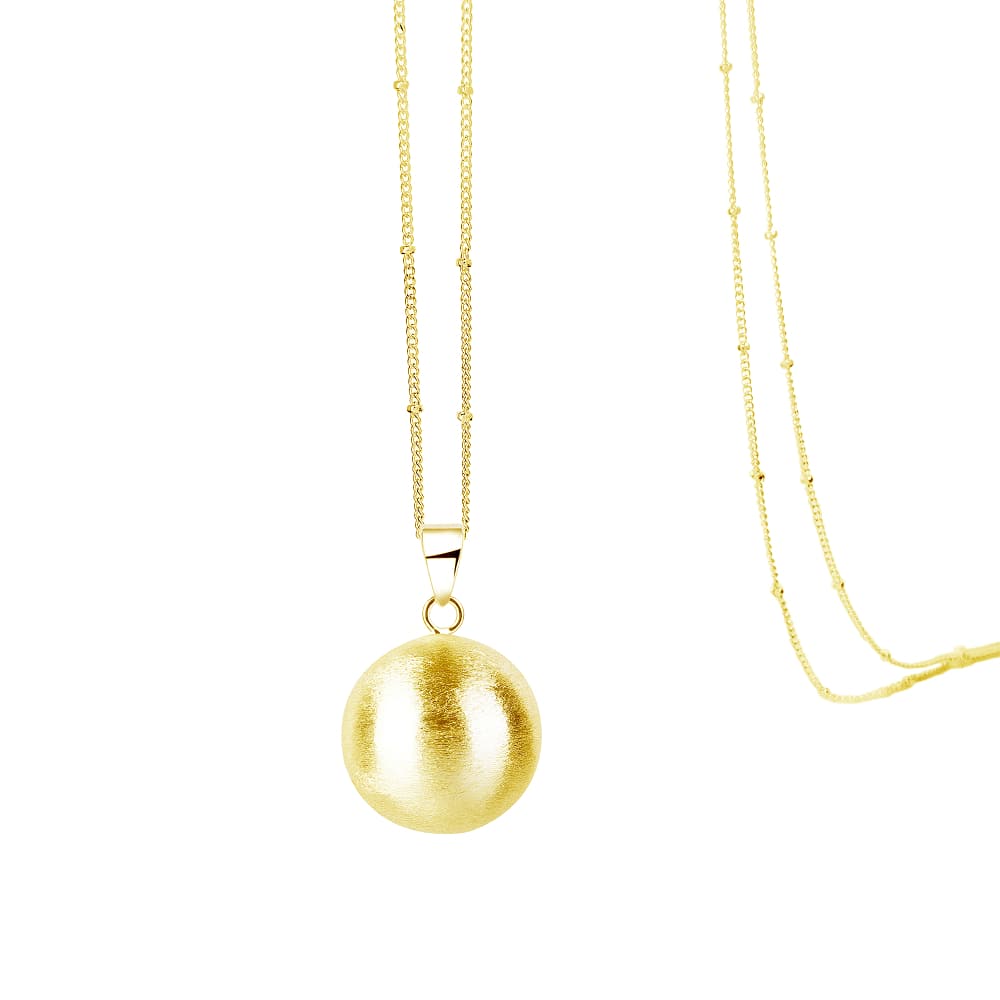
Enhancing Brand Identity:
Custom packaging is a powerful tool to reinforce brand identity and elevate the customer experience. For pregnancy bolas, offering personalized or branded packaging can significantly increase the perceived value of the product. Custom packaging allows businesses to include their logo, color schemes, and even brand messaging on boxes, pouches, or bags. This not only makes the product visually appealing but also strengthens brand recognition every time the customer or recipient interacts with the item.Gift-Ready Presentation:
Since pregnancy bolas are often purchased as thoughtful gifts for mothers-to-be, providing gift-ready packaging adds convenience and appeal. Elegant and aesthetically pleasing packaging, such as premium jewelry boxes, satin pouches, or magnetic closure gift boxes, enhances the unboxing experience, making the item feel more luxurious and special. For retailers and boutiques, this allows them to market pregnancy bolas as perfect gifts for baby showers, gender reveal parties, or maternity celebrations, justifying a higher price point.Personalization Options:
Offering personalized packaging is an excellent way to cater to gift buyers or premium customers. Custom packaging options could include:- Engraved or printed names of the mother-to-be on the box.
- Custom messages like “Welcome Baby” or “Mum-to-Be” inside the packaging.
- Special ribbon colors or finishes to match personal preferences or seasonal themes.
This level of personalization makes the pregnancy bola more meaningful, as the packaging complements the sentiment of the gift.
Luxury Packaging for High-End Markets:
For brands targeting luxury markets or boutiques that cater to premium customers, luxury packaging options can further elevate the product’s image. Materials like velvet-lined boxes, embossed logos, gold-foil stamping, or even magnetized or sliding boxes can create a high-end feel that aligns with the value of the pregnancy bola itself. These premium touches can help establish the brand as a leader in the high-end maternity or jewelry market.Brand Story Integration:
Custom packaging also offers an opportunity to tell the brand’s story. Including an insert card with a message about the history of pregnancy bolas, the significance of the jewelry, or even a personal message from the brand founder can create an emotional connection with the customer. These small touches enhance the overall experience and can build brand loyalty, encouraging repeat purchases or word-of-mouth recommendations.
Meeting Consumer Demand for Sustainability:
With increasing consumer awareness around environmental impact, many businesses are adopting eco-friendly packaging to appeal to eco-conscious consumers. Offering sustainable packaging solutions for pregnancy bolas not only aligns with current market trends but also allows businesses to attract a broader audience of ethically minded customers who prioritize sustainability in their purchasing decisions.Materials for Eco-Friendly Packaging:
Eco-friendly packaging options include:- Recycled Cardboard: Sturdy, recyclable cardboard boxes that are made from recycled materials provide a sustainable option without sacrificing durability or design. These boxes can be designed to match the brand’s aesthetic while being 100% recyclable after use.
- Kraft Paper: Using natural or recycled kraft paper for packaging is an affordable and eco-friendly alternative to traditional packaging. It offers a rustic, earthy feel that appeals to eco-conscious consumers while maintaining a clean, professional look.
- Biodegradable or Compostable Materials: Packaging made from biodegradable plastics or plant-based materials, such as cornstarch or sugarcane-based materials, offers a fully compostable option. These materials break down naturally, reducing environmental impact.
- Organic Cotton Pouches: Instead of synthetic fabrics or plastic, brands can offer organic cotton pouches for pregnancy bolas. These pouches are reusable, sustainable, and biodegradable, making them a great eco-friendly option.
Minimalist and Zero-Waste Packaging:
For businesses that want to reduce their environmental footprint even further, minimalist and zero-waste packaging solutions are becoming popular. By minimizing excess materials, such as unnecessary plastic inserts or extra layers of packaging, brands can showcase a commitment to sustainability. Unbleached cardboard with simple, eco-friendly inks or minimalist branding printed directly onto the box can also appeal to consumers who value simplicity and environmental responsibility.Communicating Sustainability:
Eco-friendly packaging not only reduces waste but also serves as a marketing point for businesses targeting green consumers. Including a message about the sustainable practices or materials used in the packaging can further enhance brand perception. For example, a note inside the box could read: “This packaging is made from 100% recycled materials and is fully recyclable or compostable. Thank you for helping us protect our planet!” Communicating this message clearly allows consumers to feel good about their purchase, reinforcing the brand’s commitment to sustainability.Branding Through Sustainable Practices:
For businesses that emphasize eco-friendliness as part of their brand values, using sustainable packaging aligns perfectly with the overall brand mission. These brands can highlight their use of carbon-neutral shipping, low-impact inks, or renewable energy in the production process, adding credibility to their green initiatives. Offering eco-friendly pregnancy bolas with matching sustainable packaging can differentiate the brand and make it more attractive to customers who prioritize ethical consumption.
By offering custom and eco-friendly packaging options, businesses can not only increase the perceived value of their pregnancy bolas but also appeal to a wider range of consumers—from those seeking luxury, personalized gifts to those who prioritize sustainability and ethical purchasing decisions. Packaging plays a crucial role in both brand identity and consumer experience, making it a vital component of a successful pregnancy bola product line.
Charpter 8
Shipping and Logistics
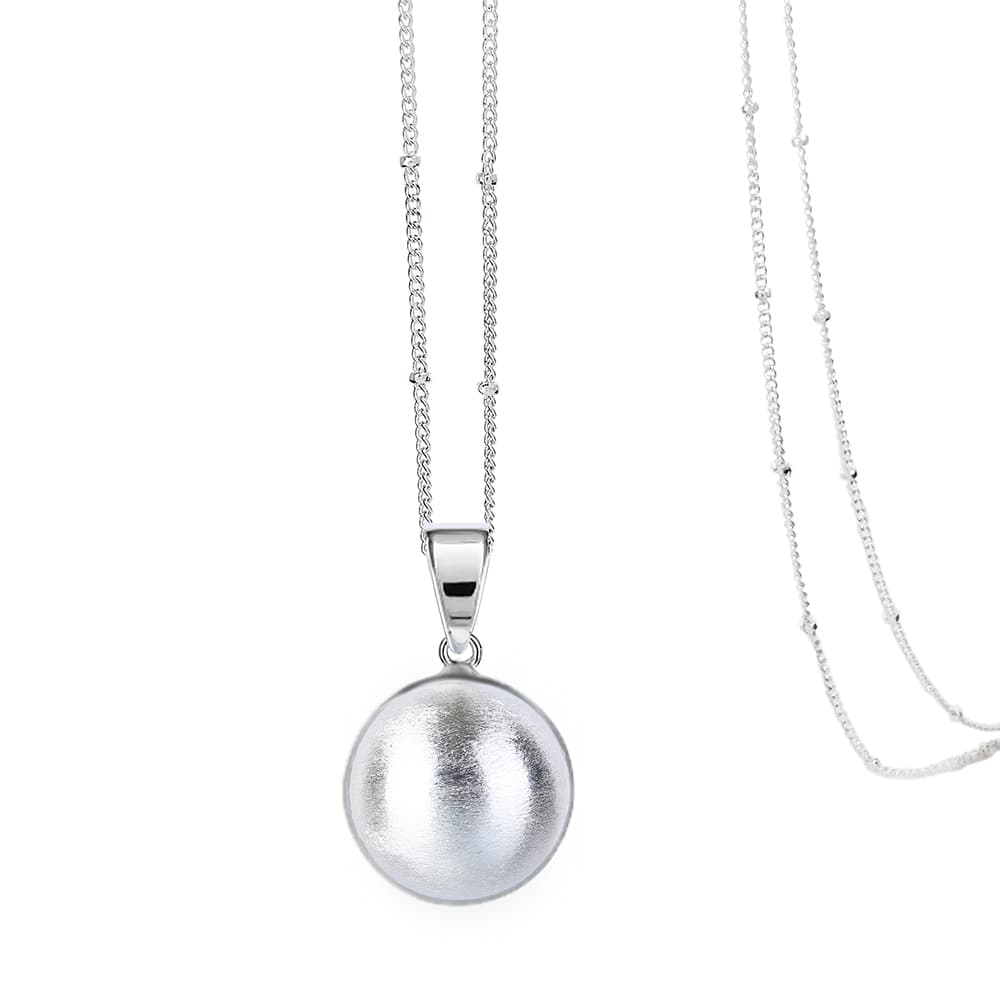
Production Time:
The production lead time for pregnancy bola jewelry in China typically ranges from 15 to 30 days, depending on the complexity of the design, material, and order quantity. For more intricate designs (such as custom engraving, gemstone accents, or special finishes), production time may extend to the upper end of this range. If custom packaging or OEM/ODM services are involved, lead times may be further extended by an additional 5–10 days.Shipping Time:
After production is completed, the shipping time will vary based on the destination and the shipping method chosen:- Standard Shipping (Sea Freight): Sea freight is the most cost-effective shipping option but also the slowest. Shipping from China to destinations like the USA or Europe typically takes 20 to 45 days. It is ideal for larger bulk orders where time is not a critical factor.
- Air Freight: Air shipping is faster but more expensive. Shipping via air typically takes 7 to 15 days for destinations such as North America, Europe, or Australia. This option is often chosen when retailers need quicker delivery to meet demand or restock inventory.
- Express Shipping (Courier Services): Express shipping (via services like DHL, FedEx, or UPS) is the fastest option, usually taking between 3 to 7 days for global destinations. While this is the most expensive method, it is useful for urgent orders, small quantities, or sample shipments.
Sea Freight (Cost-Effective for Bulk Orders):
Sea freight is the most affordable option for shipping large quantities of pregnancy bola jewelry. It is particularly cost-effective for orders that exceed 500kg or for retailers who can plan for extended lead times. While slower, shipping via sea can drastically reduce shipping costs for bulk purchases. For example, shipping a 20-foot container full of jewelry from China to the USA can cost anywhere from $1,500 to $3,000 depending on fuel prices, the shipping line, and the destination port.Tips to Reduce Sea Freight Costs:
- Consolidate Shipments: Combining shipments with other products or orders can reduce costs. Many freight forwarders offer consolidation services, allowing smaller orders to share space in a container.
- Plan Ahead: Booking shipments in advance can often result in lower rates, as last-minute bookings tend to carry premium charges.
- Negotiate with Freight Forwarders: Build relationships with freight forwarders to get competitive rates, especially if you’re shipping regularly.
Air Freight (Faster Delivery for Urgent Needs):
Air freight is typically used when faster delivery times are required. It is best suited for orders weighing between 100kg and 500kg, as smaller shipments may not justify the higher cost. Air freight costs vary based on weight and destination, typically ranging from $4 to $8 per kilogram. This option is ideal for retailers who need to restock inventory quickly or during peak sales periods.Tips to Reduce Air Freight Costs:
- Use Economy Air Freight: Some logistics providers offer an economy air freight service that is slower than standard air freight but still faster than sea shipping. This can reduce costs without sacrificing delivery speed.
- Optimize Packaging: Air freight costs are based on both weight and volume (dimensional weight). Ensure your packaging is as compact and lightweight as possible to minimize charges.
Express Shipping (For Small, Urgent Orders):
Express shipping through carriers like DHL, UPS, or FedEx is the quickest option, ideal for smaller orders, sample shipments, or when time is critical. Express shipping typically costs between $10 to $15 per kilogram, depending on the destination. For small, lightweight orders, this is a convenient solution, though it may not be cost-effective for bulk shipments.Tips to Reduce Express Shipping Costs:
- Leverage Discounts: Many express shipping companies offer discounts for bulk or frequent shipments. Signing a contract with a preferred shipping provider can lower costs over time.
- Ship in Batches: If you have multiple small orders, shipping them together in one larger package can save on costs, as larger packages benefit from economies of scale in shipping.
Customs Regulations by Region:
When importing pregnancy bola jewelry into different regions, it’s essential to understand the customs regulations, duties, and taxes to avoid unexpected costs:- European Union (EU): Jewelry imported into the EU is subject to Value Added Tax (VAT), typically ranging from 17% to 25%, depending on the country. Import duties for jewelry range from 2.5% to 4%, based on the material used. Retailers in the EU should be aware that all imported goods must comply with REACH regulations, which limit the use of certain hazardous materials in consumer products, including lead and cadmium.
- United States (USA): The US imposes import duties on jewelry, typically ranging from 5.5% to 11% of the total declared value, depending on the type of jewelry (e.g., sterling silver, gold-plated). Jewelry is also subject to customs clearance, which may involve additional handling fees. The Consumer Product Safety Improvement Act (CPSIA) regulates the amount of lead and other chemicals in children’s products, so pregnancy bolas imported into the US must comply with these safety standards.
- Australia: In Australia, importers of jewelry must pay a Goods and Services Tax (GST) of 10% on the total value of the shipment, including shipping costs. Import duties may apply depending on the material, generally ranging from 3% to 5%. Australian customs may also require compliance with the country’s Trade Descriptions Act for labeling and safety information.
Handling Import Duties and Customs:
Import duties, taxes, and customs fees can significantly affect the final cost of goods. It’s essential to account for these costs when calculating profit margins. Retailers and wholesalers can work with customs brokers or freight forwarders to ensure all paperwork is in order, minimizing delays and additional costs at the border.Tax Exemptions and Free Trade Agreements:
Some countries may offer tax exemptions or reduced duties under free trade agreements (FTAs). For instance:- Under the US-China Trade Agreement, certain products may qualify for reduced duties if specific rules of origin are met.
- In ASEAN Free Trade Area (AFTA), goods traded between member countries may benefit from lower tariffs, making it easier for retailers in Southeast Asia to import jewelry from China.
Incoterms:
When negotiating shipping and handling costs with suppliers, it is crucial to define Incoterms (International Commercial Terms), such as:- FOB (Free on Board): The supplier covers costs until the goods are loaded onto the shipping vessel. After that, the buyer takes on responsibility for shipping, duties, and taxes.
- CIF (Cost, Insurance, and Freight): The supplier covers the cost of the goods, insurance, and shipping to the destination port, though import duties and taxes are still the buyer’s responsibility.
By understanding the nuances of shipping methods, costs, and import regulations, businesses can choose the most efficient and cost-effective logistics solutions for their pregnancy bola orders. This planning ensures timely delivery, reduced shipping expenses, and smooth customs clearance, enhancing overall profitability and customer satisfaction.
Charpter 9
Quality Control and Inspection

Materials Inspection:
Ensuring the quality of the materials used in pregnancy bola jewelry is the first and most critical step in the production process. This includes verifying that the metals (such as brass, or gold plating) meet the required standards for purity and safety. For example:- Gold-Plated: The thickness of the plating, typically measured in microns, should be consistent across all pieces, ensuring uniformity and long-lasting quality.
- Hypoallergenic Materials: All materials(especially like brass we used) must be checked to ensure they are free from harmful substances such as lead, cadmium, and nickel, especially since pregnancy bolas are worn close to the skin and could trigger allergic reactions.
Quality control teams perform material verification tests, such as spectroscopy analysis or chemical tests, to confirm that materials comply with international safety standards (e.g., REACH or CPSIA). This helps prevent the use of substandard or unsafe materials that could cause problems down the supply chain.
.Design and Mold Inspection:
Before mass production begins, a thorough inspection of the molds or prototypes is conducted to ensure that the design specifications are met. This step involves:- Checking Design Accuracy: Ensuring that the shape, size, and dimensions of the pregnancy bola match the original design or customer specifications.
- Alignment and Detail Precision: Ensuring that any intricate designs (such as engravings, gemstone settings, or patterns) are well-executed and aligned correctly across all pieces.
- Symmetry and Balance: Ensuring the symmetry of the pregnancy bola, especially since it hangs as a pendant, and its balance is crucial to producing the soothing chime sound. A poorly balanced bola may not produce the intended sound or could hang unevenly.
Finishing Inspection:
A critical part of quality control is inspecting the finish of the pregnancy bola, including:- Polish and Surface Smoothness: Every piece undergoes a check for smoothness, ensuring the surface is polished to a high sheen or that any intended matte finish is uniform. The surface should be free from scratches, dents, or blemishes.
- Plating and Coating Quality: For gold-plated or rose gold-plated pregnancy bolas, the coating must be applied evenly, with no peeling, bubbling, or discoloration. Inspectors measure the thickness of the plating to confirm it meets the specified standards.
- Chime Quality: The internal chime mechanism must be inspected to ensure that it produces a clear, soothing sound. Poorly made chimes may produce a muffled or inconsistent tone, which can impact the product’s primary function.
Safety Testing:
Since pregnancy bolas are often worn for extended periods and close to the body, especially during a sensitive time like pregnancy, safety is a top priority. Lead, cadmium, and nickel tests are routinely conducted to ensure compliance with international safety standards:- SGS Testing: Products are tested to verify that they comply with SGS standards, ensuring that harmful materials are below the permissible limits.
Assembly and Functionality Check:
For pregnancy bolas that have multiple components (such as gemstone embellishments or chime mechanisms), the final assembly is inspected to ensure functionality:- Chime Functionality: Each piece is tested to ensure the chime produces the correct, soothing sound. The sound should be soft but noticeable, offering the calming effect that mothers expect.
- Secure Assembly: All parts, including clasps, chains, and pendant components, are checked for secure assembly to prevent breakage or detachment during wear. This is particularly important for necklaces, as weak clasps or poorly connected chains could lead to customer dissatisfaction.
The inspection team will conduct random sample checks to ensure that these standards are met consistently across the entire production batch.
By utilizing quality control, manufacturers can ensure that pregnancy bola jewelry meets the highest standards for safety, design, and functionality. These processes reduce the risk of defects, ensure compliance with international regulations, and provide buyers with confidence in the products they are purchasing.
Charpter 10
After-Sales Support and Warranty
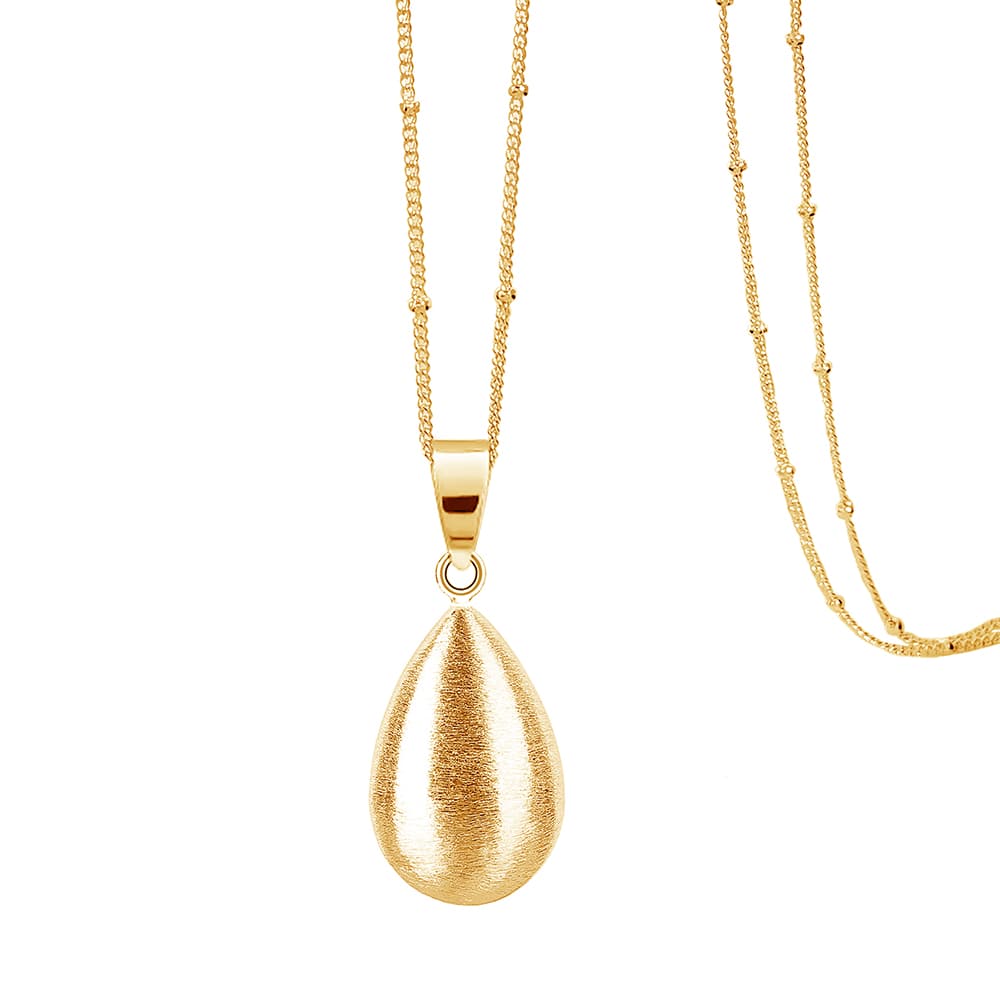
Standard Warranty Coverage:
Offering a warranty is crucial to ensuring customer confidence in the product, especially for pregnancy bola jewelry, where quality and durability are key concerns. A standard warranty typically covers the following:- Material Defects: If the pregnancy bola is found to have material defects, such as tarnishing, improper metal composition, or issues with plating (such as peeling or fading of gold plating), the warranty will cover repairs or replacements.
- Manufacturing Faults: This includes any defects caused during production, such as poor assembly, faulty clasps, or incomplete finishing. If a bola’s chime mechanism does not function correctly, or if there are visible imperfections on the surface, the warranty will ensure a replacement or repair.
- Durability Issues: Some warranties cover issues related to normal wear and tear over a specified period, such as chain breakage or gemstone loosening. However, this may be limited based on the usage of the product and adherence to the recommended care guidelines.
The standard warranty period for pregnancy bola jewelry typically ranges from 6 months to 1 year from the date of purchase. This timeframe allows customers to experience the product over several months while providing adequate protection for unexpected faults.
Extended Warranty Options:
To further enhance customer confidence, some manufacturers offer extended warranties for an additional fee. An extended warranty may extend coverage for up to 2 to 3 years, providing more long-term protection for high-end or customized products. Extended warranties can cover additional aspects like:- Accidental Damage: Some warranties may cover damage caused by accidental drops or misuse, which standard warranties may exclude.
- Lifetime Chime Guarantee: For higher-end products, a lifetime guarantee on the chime mechanism may be offered, ensuring that it continues to function as intended for years to come.
Warranty Registration and Process:
Customers may be required to register their warranty online or provide proof of purchase to activate their coverage. The registration process often involves submitting the purchase receipt and the product’s serial number (if applicable). This allows manufacturers to keep track of warranties and ensure claims are processed smoothly.
Return Policy for Faulty Products:
A clear and straightforward return policy is essential for maintaining customer satisfaction. If a customer discovers a defect or fault in their pregnancy bola, they should be able to return it for a replacement or refund. Key aspects of the return policy include:- Return Timeframe: Customers typically have 30 to 60 days from the date of purchase to return faulty products for a full refund or exchange. Beyond this period, the warranty will cover repairs or replacements.
- Condition of Return: The product should be returned in its original condition, along with the packaging, warranty card, and proof of purchase. Manufacturers may request that customers provide photos of the defect before authorizing the return to expedite the process.
- Shipping Costs: In many cases, manufacturers or retailers will cover the shipping costs for returning faulty items. This ensures that customers do not face any additional burdens when dealing with defective products.
Exchange Policy for Damaged or Incorrect Products:
If a customer receives the wrong product (such as a different design or material) or their pregnancy bola arrives damaged, the manufacturer should offer an exchange policy. The customer can request a replacement or opt for a different product if the one they ordered is no longer available. This process typically includes:- Inspection upon Return: Once the faulty or incorrect product is returned, the quality control team inspects it to confirm the issue. After verification, a replacement is dispatched.
- Expedited Handling for Urgent Orders: For customers who need a replacement quickly, such as those gifting the product, an expedited process for exchanges may be offered, with faster shipping options at no extra cost.
Refund Process:
For customers seeking a refund rather than a replacement, the refund process should be handled swiftly. Upon receiving and inspecting the returned product, the manufacturer or retailer initiates the refund, typically within 7 to 14 business days. The refund is made to the original payment method unless otherwise requested by the customer.In the case of partial refunds, such as when customers choose to keep the product despite minor defects, manufacturers may offer compensation (such as a percentage of the product cost) rather than requiring a full return.
Availability of Support Channels:
Excellent post-purchase support is critical for building long-term relationships with customers. Offering multiple support channels makes it easy for customers to contact the brand when they encounter issues or need assistance. Common customer support options include:- Email Support: Customers can send their concerns, queries, or warranty claims via email. Response times should ideally be within 24 to 48 hours to ensure timely resolution of issues.
- Phone Support: For more urgent matters or complex concerns, offering phone support gives customers immediate assistance. Phone support should be available during standard business hours and cover multiple time zones, especially for international customers.
- Live Chat: Providing live chat on the company’s website allows customers to get real-time support for questions related to product care, warranties, or returns.
- FAQ and Self-Help Resources: Many issues, such as care instructions or troubleshooting minor problems, can be addressed through online FAQs or instructional videos. These resources help customers resolve concerns without needing to contact customer support directly.
Building Brand Loyalty Through After-Sales Service:
High-quality after-sales support fosters trust and brand loyalty. By offering responsive, helpful customer service, brands can create positive experiences for customers, even when things go wrong with the product. Key factors that build loyalty include:- Fast Issue Resolution: Promptly addressing customer concerns, whether it’s replacing a faulty product or answering warranty-related questions, helps to maintain customer satisfaction and encourages repeat purchases.
- Personalized Communication: Offering personalized support, such as addressing customers by name and acknowledging their specific issue, makes customers feel valued. Follow-up emails after a warranty claim or refund can demonstrate the company’s commitment to customer care.
- Customer Appreciation Programs: Some brands offer loyalty programs or discounts for customers who have purchased from them previously. For example, providing a discount on future purchases after a warranty claim can turn a negative experience into a positive one, encouraging the customer to continue purchasing from the brand.
Warranty Extensions or Upgrades for Loyal Customers:
Offering warranty extensions or upgrades to loyal customers can also enhance the customer experience. For example, after a successful purchase, customers may be invited to upgrade their warranty coverage at a discounted rate. Alternatively, brands can offer complimentary warranty extensions to customers who provide positive feedback or who have made multiple purchases.
In summary, a comprehensive after-sales support system that includes clear warranty details, an efficient returns and refunds policy, and responsive customer support is key to ensuring customer satisfaction and loyalty. These elements not only protect customers but also strengthen the brand’s reputation, encouraging long-term business relationships and repeat sales.
Charpter 11
Trends and Future Opportunities
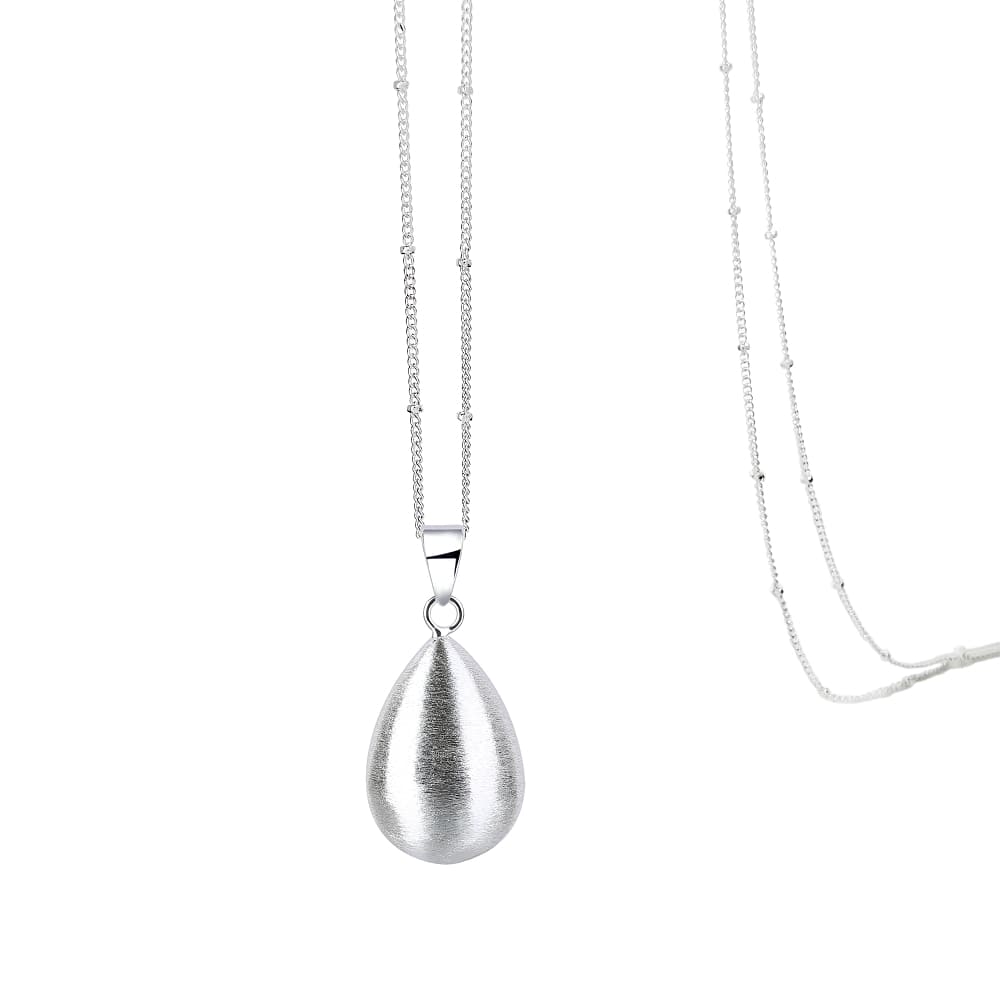
Minimalist and Modern Designs:
One of the strongest emerging trends in maternity jewelry, including pregnancy bolas, is the shift towards minimalist and modern designs. Contemporary mothers are seeking sleeker, more subtle designs that can be worn beyond pregnancy as fashionable accessories. This includes:- Simple, geometric shapes such as spheres, discs, or teardrops.
- Minimalist engravings with personalized initials, dates, or small symbols rather than elaborate patterns.
- Polished finishes or matte textures in metals like sterling silver or gold-plated styles.
This trend is particularly appealing to consumers who value timelessness and versatility, allowing them to wear the jewelry as part of their everyday wardrobe long after the pregnancy period.
Personalized and Customizable Jewelry:
As more consumers seek products that reflect their personal stories and milestones, customization options in pregnancy bolas are becoming increasingly popular. Expectant mothers and gift buyers are gravitating towards jewelry that can be personalized with:- Engravings of names, birthdates, or meaningful messages.
- Gemstone additions such as birthstones or healing crystals that hold special significance for the wearer.
- Custom packaging with personalized messages or names for a more sentimental gifting experience.
Brands offering OEM/ODM services can capitalize on this trend by allowing customers to tailor their pregnancy bolas, making them more meaningful and unique.
Eco-Friendly and Sustainable Materials:
There is a growing demand for eco-conscious jewelry as more consumers become aware of environmental issues. Mothers-to-be are increasingly drawn to products that are ethically sourced and made from sustainable materials. Key elements of this trend include:- Recycled metals such as sterling silver or gold.
- Ethically sourced gemstones or conflict-free materials.
- Eco-friendly packaging made from recycled or biodegradable materials.
This trend appeals to the eco-conscious consumer segment that prioritizes sustainability in their purchasing decisions. Brands that can certify the ethical sourcing and sustainability of their products will have a competitive edge in this growing market.
Wellness and Mindfulness Integration:
With the rising popularity of wellness and mindfulness, pregnancy bolas are now being positioned not just as fashion accessories but also as tools for emotional and mental well-being. This trend has led to the development of designs that incorporate:- Healing crystals like amethyst or rose quartz, which are believed to promote calm and emotional balance during pregnancy.
- Soothing chime tones that enhance mindfulness practices such as meditation or yoga for expectant mothers.
As more mothers focus on self-care during pregnancy, these wellness-related designs are gaining traction, offering brands an opportunity to market pregnancy bolas as holistic wellness tools.
Tech-Enhanced Jewelry:
Although still emerging, tech-enhanced maternity jewelry is a potential growth area. This trend involves integrating smart technology into pregnancy bolas, allowing them to track fetal movement or provide soothing vibrations that sync with breathing exercises or relaxation apps. While still in the early stages, this convergence of wearable tech and maternity jewelry could open new avenues for brands that want to innovate and offer products that combine fashion, function, and technology.
New Geographic Markets:
Pregnancy bolas are currently popular in regions with strong cultural connections to maternity traditions, such as Mexico and parts of Europe. However, there are several untapped markets where pregnancy bola jewelry could thrive:- Asia-Pacific Region: Countries like Japan, South Korea, and China are experiencing a growing interest in maternity and wellness products as disposable incomes rise and consumers become more aware of global trends. Maternity jewelry that promotes emotional well-being and prenatal bonding could see significant demand in these markets.
- Middle East: With a focus on family values and motherhood, the Middle Eastern market presents opportunities for pregnancy bola jewelry, particularly luxury or customized versions that appeal to high-end consumers. Offering gold-plated or gemstone-adorned bolas could attract affluent buyers looking for meaningful maternity gifts.
- Latin America: While Mexico has a rich tradition of pregnancy bolas, other Latin American countries such as Brazil, Argentina, and Colombia are ripe for expansion. As awareness of the product grows, introducing pregnancy bolas with modern designs could capture attention in these regions.
New Consumer Segments:
While pregnancy bolas traditionally target expectant mothers, there are additional consumer segments where these products could thrive:- Gift Buyers: Expanding the pregnancy bola market to gift buyers opens up new opportunities, especially for events such as baby showers, gender reveal parties, and motherhood milestones. Customizable or luxury pregnancy bolas can be marketed as thoughtful, personalized gifts for friends, family members, and coworkers celebrating pregnancy.
- Wellness Enthusiasts: As pregnancy bolas become more associated with mindfulness and emotional well-being, they can be marketed to wellness-focused consumers. This includes individuals who may not be pregnant themselves but are interested in wellness products or gifts that promote relaxation and emotional balance. Pregnancy bolas with healing crystals or those marketed as mindfulness aids could appeal to this growing audience.
- Fashion-Forward Consumers: By positioning pregnancy bolas as stylish accessories that can be worn beyond pregnancy, brands can expand their appeal to fashion-conscious women. Modern, minimalist designs that integrate seamlessly into daily wardrobes can attract consumers who appreciate jewelry with a deeper emotional or personal meaning, even if they are not currently expecting.
Online Retail and E-Commerce Expansion:
The growing popularity of e-commerce offers significant opportunities for pregnancy bola jewelry brands to expand their market reach. With the rise of direct-to-consumer (DTC) sales, brands can tap into global markets by building strong online platforms and engaging with customers via social media and influencer marketing. Some opportunities include:- Customizable Online Shopping Experiences: Allowing customers to personalize their pregnancy bolas online with engravings, gemstones, and packaging offers a unique selling proposition in the e-commerce space.
- Subscription Boxes: Offering pregnancy bolas as part of a maternity subscription box is another way to tap into the growing trend of curated monthly deliveries. This could include pregnancy-related products, wellness items, and fashion accessories, with the bola being a centerpiece of the package.
- Partnerships with Online Retailers: Collaborating with established online marketplaces such as Amazon, Etsy, or regional e-commerce platforms (e.g., JD.com in China or Lazada in Southeast Asia) can help pregnancy bola brands access wider audiences.
Collaborations with Wellness and Fashion Brands:
Pregnancy bolas can thrive in collaborative efforts with wellness or fashion brands that cater to pregnant women and mothers. For example, partnerships with yoga studios, spa brands, or maternity clothing lines can create co-branded collections that emphasize both fashion and well-being. By positioning the pregnancy bola as part of a larger lifestyle trend, brands can open up new revenue streams and expand their presence in related markets.
In summary, emerging trends such as minimalist designs, customization, and sustainability are shaping the future of pregnancy bola jewelry, while new geographic markets, consumer segments, and e-commerce provide significant opportunities for growth and expansion. By staying attuned to these trends and leveraging new market opportunities, brands can position themselves for success in the evolving maternity jewelry industry.
Charpter 12
How to Place Orders and Work with Suppliers
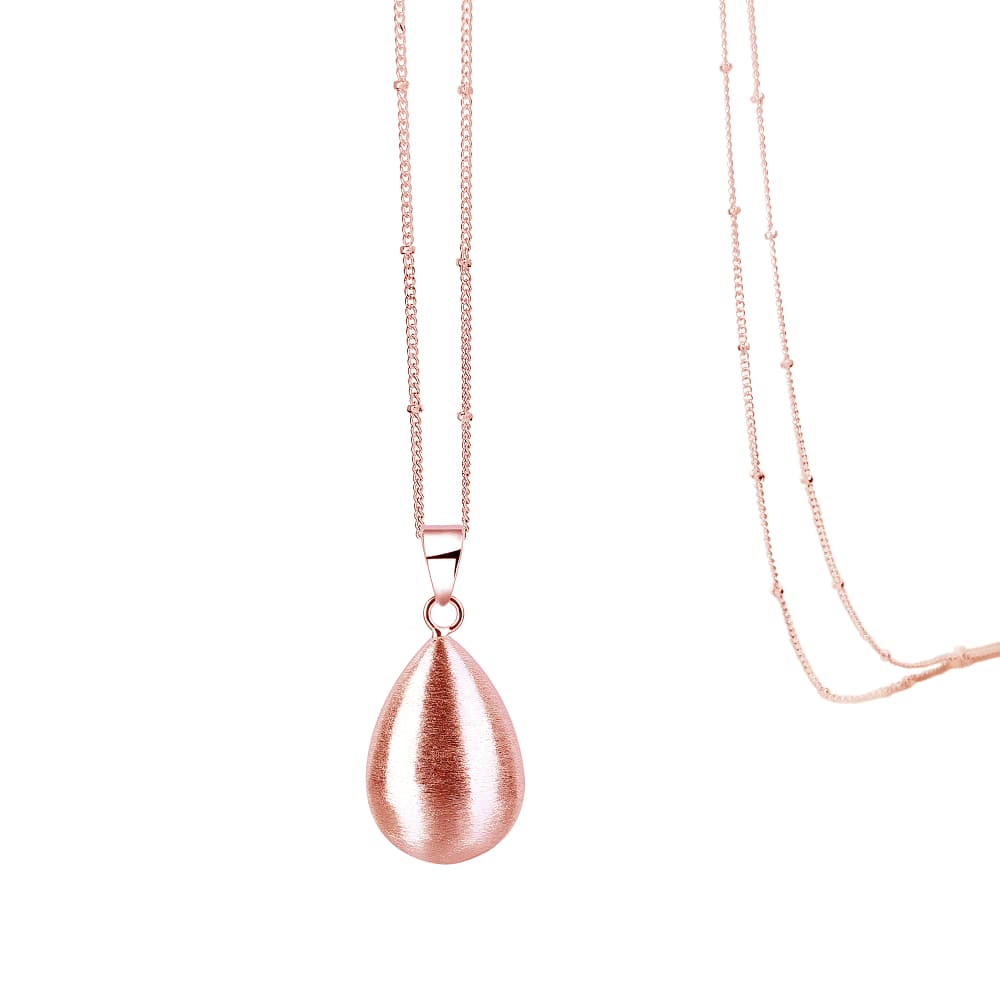
Placing orders with manufacturers in China can be straightforward, especially with clear communication and an understanding of the steps involved. Below is a step-by-step guide to help ensure a smooth and efficient process:
Initial Inquiry and Product Specifications:
Start by reaching out to potential suppliers with a clear inquiry. Include detailed information about the product you’re interested in, such as:- Material (e.g., sterling silver, stainless steel, brass, etc.).
- Design preferences (e.g., shape, size, color, engravings).
- Customization needs (e.g., logos, packaging, gemstone options).
- Quantity (provide a rough estimate of the order size).
- Certifications required (e.g., SGS, lead/nickel-free standards).
Be specific about your needs to avoid misunderstandings later in the process. Include any target delivery dates if you have a strict timeline.
Quotation and Negotiation:
Once the supplier receives your inquiry, they will typically provide a quotation that includes:- Unit price based on the quantity ordered.
- MOQ (Minimum Order Quantity) required by the manufacturer.
- Lead time for production.
- Shipping costs (if applicable) or options for FOB (Free on Board) pricing.
At this stage, you can negotiate:
- The unit price (especially if you’re ordering in larger quantities).
- Any discounts for long-term partnerships or repeat orders.
- Lead times to ensure timely delivery.
- Shipping method (e.g., sea freight, air freight, or express courier).
Ensure that all costs are broken down clearly, including any mold fees for custom designs or additional charges for packaging.
Sampling:
Before placing a bulk order, it’s recommended to request a sample of the product to inspect the quality firsthand. Here’s how the sampling process typically works:- Request samples of the specific product you want, especially if custom designs or materials are involved.
- For fully customized products, you may need to approve a prototype or mold before finalizing the order.
- Review the sample for material quality, finish, design accuracy, and functionality (for pregnancy bolas, check the sound and smoothness).
While most suppliers charge for samples, they may refund the sample fee when you place a bulk order.
Finalizing the Order and Contract:
Once you’re satisfied with the sample and ready to proceed, confirm the following with your supplier:- Final quantity and price based on any changes made during the sampling phase.
- Payment terms, which are often 50%/30% deposit before production begins and 50%/70% balance before shipment.
- Production timeline, with clear deadlines for each phase of the order.
- Shipping terms (e.g., EWX, FOB, or DAP).
- Any warranty or after-sales support terms.
Ensure that all agreed terms are detailed in a purchase contract. This contract should include penalties for delays or non-compliance with quality standards.
Production Monitoring:
Depending on the size of the order, it may be beneficial to monitor production. You can:- Request progress updates and photos from the manufacturer.
Quality Control and Pre-Shipment Inspection:
Before the order is shipped, conduct a Pre-Shipment Inspection (PSI), either personally or via a third-party inspection service. This inspection should verify:- Quantity accuracy.
- Product quality (check for defects, proper finishes, and functionality).
- Packaging to ensure it’s as requested and that the products are adequately protected for shipment.
Shipping and Delivery:
Once the goods are ready and the final payment is made, the supplier will arrange shipping. You should:- Confirm the shipping method (sea freight, air freight, or express courier) and tracking details.
- Make sure all import documents are provided, including the Bill of Lading, Commercial Invoice, Packing List, and any certificates (e.g., SGS test reports).
- Arrange customs clearance through your freight forwarder or broker.
Receiving and Final Inspection:
Once the goods arrive, conduct a final inspection to ensure that the order matches the specifications. If any issues arise, you can refer to the warranty or after-sales agreements for resolution.
Selecting a reliable supplier is critical to ensuring high-quality products, timely delivery, and smooth communication. Here are key considerations when evaluating potential manufacturers:
Certifications and Compliance:
Ensure the supplier holds relevant certifications that verify the quality of their products and compliance with international safety standards. Important certifications to look for include:- SGS certification to confirm the product is free from harmful substances like lead, cadmium, and nickel.
Request copies of these certifications and verify them if necessary to ensure the supplier meets the legal and quality requirements for your market.
Production Capacity and Lead Times:
Assess whether the supplier has the capacity to meet your order size and deadline. Factors to consider include:- Manufacturing scale: Does the supplier have the ability to handle large orders, especially if your business grows?
- Lead times: Ensure the supplier can meet your required production and shipping timelines. A supplier with shorter lead times and flexibility for rush orders is ideal for responding to market demand quickly.
- Customization capability: If you require OEM or ODM services, evaluate the supplier’s experience and ability to deliver custom designs according to your specifications.
Communication Efficiency:
Effective communication is crucial for avoiding misunderstandings and ensuring smooth operations. Consider the following:- Responsiveness: Does the supplier respond promptly to inquiries, provide detailed answers, and proactively offer solutions to challenges?
- English proficiency: Clear communication is essential, especially if design and technical details need to be discussed. Ensure that the supplier’s sales or customer service team is proficient in English or your preferred language.
- Willingness to collaborate: The supplier should be open to addressing your needs and offering suggestions for improvements or cost savings.
Quality Assurance Process:
Review the supplier’s quality control procedures to ensure they have robust systems in place for inspecting materials, design accuracy, and finishing quality. Ask the following:- Do they have an in-house quality control team?
- What are their inspection standards during and after production?
- Can they accommodate third-party inspections?
Suppliers with strong quality control protocols can reduce the risk of defects and rework, saving time and costs.
Experience and Reputation:
Research the supplier’s experience and track record in the maternity jewelry or fashion accessory industry. You can:- Check references or reviews from other buyers to gauge their reliability.
- Review their years in business and previous projects to see if they have experience handling similar orders.
- Look for export experience to your target market, ensuring they understand the customs and shipping requirements for your region.
Payment Terms and Flexibility:
Review the supplier’s payment terms to ensure they offer reasonable conditions that align with your cash flow. Most suppliers require a 50%/30% deposit before production begins and 50%/70% balance before shipment, but it’s worth negotiating:- Lower upfront deposits if possible.
- Payment methods that are convenient and secure (e.g., via bank transfer, PayPal, or a Letter of Credit for large orders).
Trusted suppliers are typically flexible and willing to adjust terms for long-term business relationships.
After-Sales Support:
A reliable supplier should offer after-sales support, including warranties, handling of defective goods, and customer service after delivery. Verify their policies for:- Handling returns or defective products.
- Offering warranty or replacement services for faulty goods.
- Providing continuous support for reorders, product updates, or modifications.
By following these steps and selecting a supplier with the right certifications, capacity, and communication standards, you can establish a successful long-term partnership that ensures the quality and timely delivery of pregnancy bola jewelry.
Drop us a line, and we'll try to reply you within 24 hours.
Your information will be kept strictly confidential.
We would be happy to learn your business

I am the Elena Du, the CEO of Aisni Bola (Belong to Aisni Jewelry), me and my team would be happy to meet you and learn all about your business, requirements and expectations

